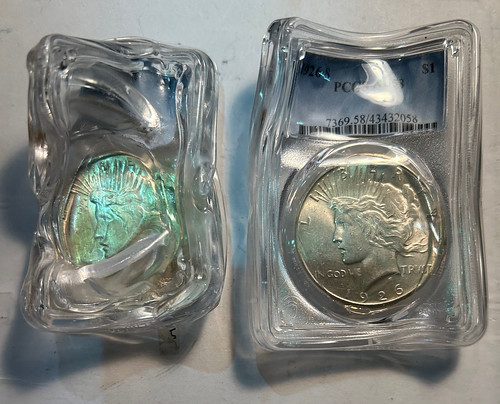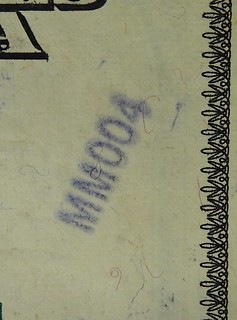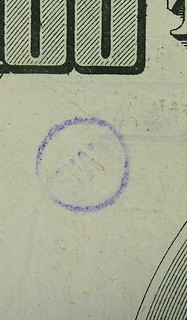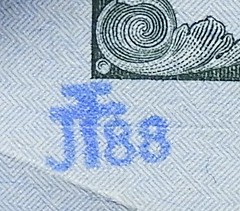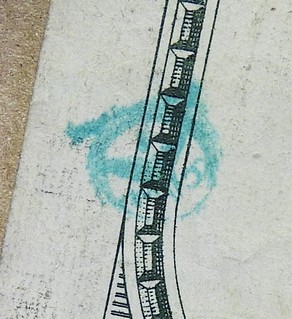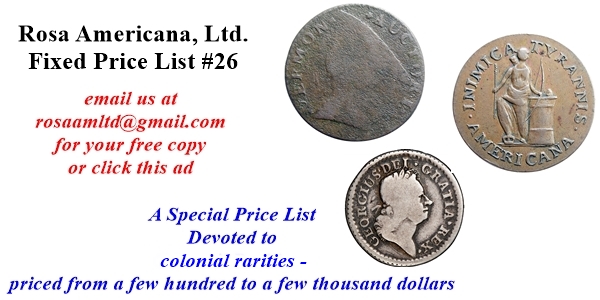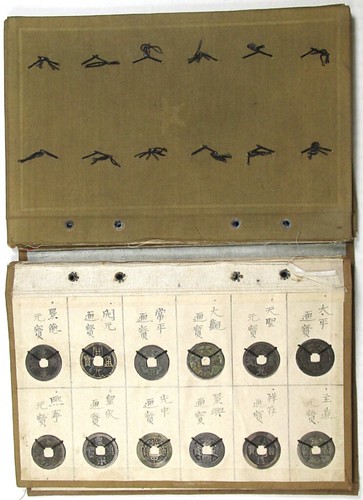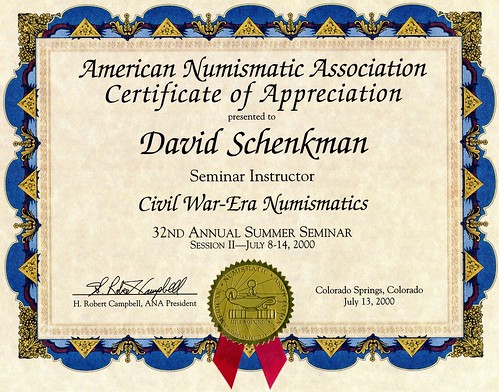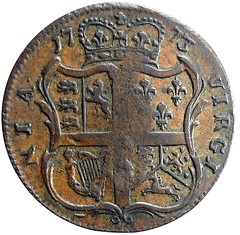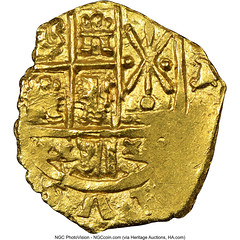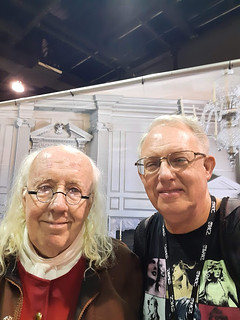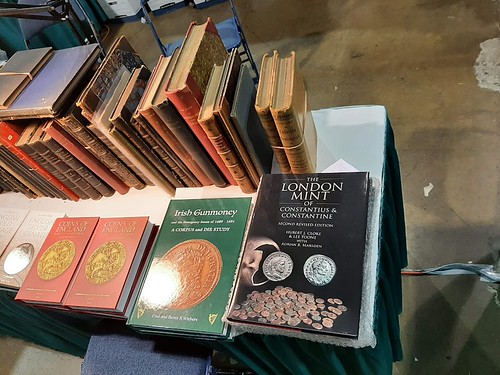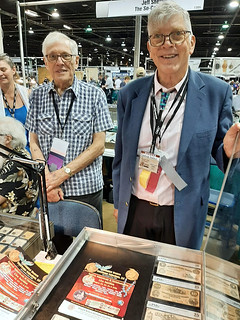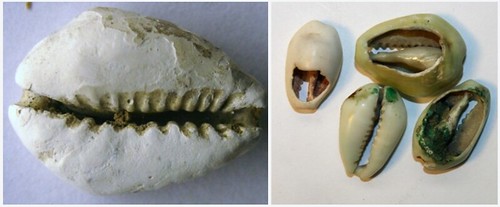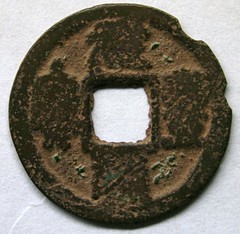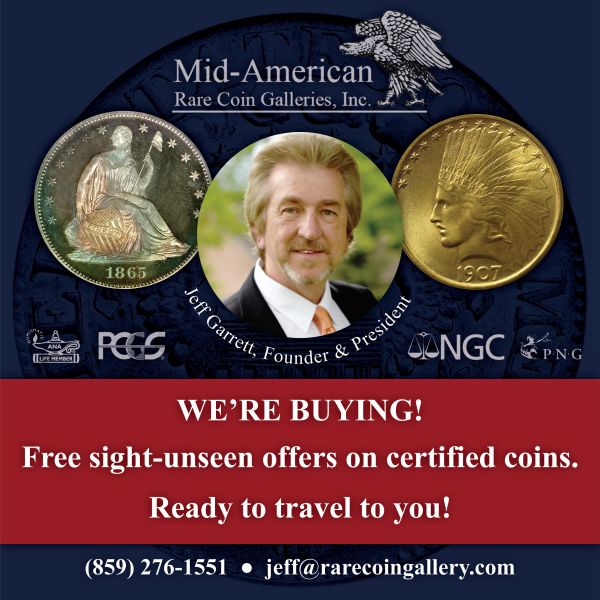
Visit our NBS Sponsors
About UsThe Numismatic Bibliomania Society is a non-profit association devoted to the study and enjoyment of numismatic literature. For more information please see our web site at coinbooks.org SubscriptionsThose wishing to become new E-Sylum subscribers (or wishing to Unsubscribe) can go to the following web page link MembershipThere is a membership application available on the web site Membership Application To join, print the application and return it with your check to the address printed on the application. Print/Digital membership is $40 to addresses in the U.S., and $60 elsewhere. A digital-only membership is available for $25. For those without web access, write to: Jeff Dickerson, Treasurer AsylumFor Asylum mailing address changes and other membership questions, contact Jeff at this email address: treasurer@coinbooks.org SubmissionsTo submit items for publication in The E-Sylum, write to the Editor at this address: whomren@gmail.com BUY THE BOOK BEFORE THE COINSale CalendarWatch here for updates! |
- WAYNE'S WORDS: THE E-SYLUM AUGUST 11, 2024
- NEW BOOK: PORTRAITS, METALS, AND MONUMENTS
- SCHENKMAN PRESENTS USS MERRIMACK RELICS
- VIDEO: US PRISON SYSTEM MONEY
- MORE CHOP MARKS ON PAPER MONEY
- NOTES FROM E-SYLUM READERS: AUGUST 11, 2024
- VOCABULARY TERM: PRESERVATION
- MORE ON THE DOCTOR OF NUMISMATICS
- STAN KESSELMAN INTERVIEW, PART EIGHT
- ERIC SCHENA INTERVIEW, PART FIVE
- SUMMER 2024 ROSA AMERICANA SELECTIONS
- HERITAGE SHIPWRECK & TREASURE COINS SALE
- THE COLLECTION OF LUCIUS S. RUDER
- NOONAN'S OFFERS UNIQUE EDWARD VII GOLD RUPEE
- WAYNE'S NUMISMATIC DIARY: AUGUST 11, 2024, PART I
- THE MARITIME SILK ROAD
- MEDIEVAL COIN BROOCH FOUND IN FIELD
- NEW ENGLAND THREEPENCE DISCOVERY
- 2024 PARIS OLYMPIC MEDALS NOT PURE
- 2024 PARIS OLYMPIC MEDALS DETERIORATE
- 2028 LOS ANGELES OLYMPICS HANDOVER MEDAL
- NEW ENGLAND'S GODFATHER OF COUNTERFEITING
- POLICEMAN COUNTERFEITED 2 EURO COINS
- LOOSE CHANGE: AUGUST 11, 2024
Content presented in The E-Sylum is not necessarily researched or independently fact-checked, and views expressed do not necessarily represent those of the Numismatic Bibliomania Society.
WAYNE'S WORDS: THE E-SYLUM AUGUST 11, 2024
 New subscribers this week include:
Mark Wieclaw.
Welcome aboard! We now have 7,249 subscribers.
New subscribers this week include:
Mark Wieclaw.
Welcome aboard! We now have 7,249 subscribers.
Thank you for reading The E-Sylum. If you enjoy it, please send me the email addresses of friends you think may enjoy it as well and I'll send them a subscription. Contact me at whomren@gmail.com anytime regarding your subscription, or questions, comments or suggestions about our content.
This week we open with one new book, updates from the Newman Numismatic Portal, notes from readers, and more.
Other topics this week include medal designer Eugene Daub, chopmarks on paper money, the ANA's honorary Doctor of Numismatics, shipwreck coins, Olympic medals, counterfeiters old and new, and the Maritime Silk Road.
To learn more about relics from the USS Merrimack, prison money, the 1781 North American Token, collectors Lucius S. Ruder and Dr. Philip Holmes, books with embossed and colored plates, the New England Threepence and Olympics Handover Medallions, read on. Have a great week, everyone!
Wayne Homren
Editor, The E-Sylum
NEW BOOK: PORTRAITS, METALS, AND MONUMENTS
A new book on the work of sculptor and medal designer Eugene Daub is planned. Here's the announcement. -Editor
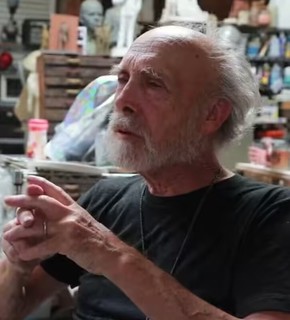 A group of dedicated San Pedro collaborators are raising money to publish the first comprehensive book dedicated to the work of renowned sculptor and San Pedro resident, Eugene Daub. Titled, Portraits, Metals, and Monuments, this book documents Daub's career, his dedication to capturing the profound humanity of historical figures, and his significant contributions to public art.
A group of dedicated San Pedro collaborators are raising money to publish the first comprehensive book dedicated to the work of renowned sculptor and San Pedro resident, Eugene Daub. Titled, Portraits, Metals, and Monuments, this book documents Daub's career, his dedication to capturing the profound humanity of historical figures, and his significant contributions to public art.
The Foreword of this 120-page book is authored by American Art critic Wolfgang Marby and it features more than 100 photographs of Daub's public art work and is edited by Andrea Serna.
In 2021, Daub won the Marcel Jovine President's Prize for a realistic work, in the form of a bas-relief of Civil Rights leader and legendary member of Congress, John Lewis.
In 2019, Daub completed a bronze statue of Harry Bridges. Within the past 30 years Daub has designed and created many public art commissions for the U.S. government, private foundations, universities and corporations and has exhibited in the British Museum and the Smithsonian Institute, among other locations.
In 2013, a monument he completed of another Civil Rights icon, Rosa Parks, was installed in the statuary hall of the U.S. Congress.
His previous commissions include Harvey Milk, young Abraham Lincoln and Thomas Jefferson. The artist has built his reputation on classically styled figurative works. His accomplishments have been recognized through numerous awards in full figure, monumental and bas relief sculpture. He serves on the board of the National Sculpture Society and has taught sculpture around the country for years.
For more information, see:
EugeneDaubArtBook
(https://tinyurl.com/Eugene-Daub-Art-Book)
To read the complete article, see:
Artists and Supporters Unite to Publish Book on Renowned Sculptor Eugene Daub
(https://www.randomlengthsnews.com/archives/2024/08/08/sculptor-eugene-daub/56456)
To read earlier E-Sylum articles, see:
EUGENE DAUB RETROSPECTIVE
(https://www.coinbooks.org/v24/esylum_v24n39a10.html)
ANS AWARD WINS AMERICAN MEDAL OF THE YEAR
(https://www.coinbooks.org/v27/esylum_v27n28a25.html)
SCHENKMAN PRESENTS USS MERRIMACK RELICS
The latest addition to the Newman Numismatic Portal is David Schenkman's slide set on relics from the USS Merrimack. Project Coordinator Len Augsburger provided the following report. -Editor
David Schenkman Presents Relics from the USS Merrimack
 The USS Merrimack represents a well-known bit of Civil War naval history. Born as the USS Merrimack in 1855 and later sunk by the Union to avoid capture, the Confederacy raised the vessel and recommissioned her as the newly ironclad CSS Virginia in 1862. The CSS Virginia faced off against the USS Monitor in the 1862 Battle of Hampton Roads, an attempt to overcome the Union blockade that isolated Norfolk and Richmond. Neither side could claim victory, but the Union maintained the advantage as the blockade held.
The USS Merrimack represents a well-known bit of Civil War naval history. Born as the USS Merrimack in 1855 and later sunk by the Union to avoid capture, the Confederacy raised the vessel and recommissioned her as the newly ironclad CSS Virginia in 1862. The CSS Virginia faced off against the USS Monitor in the 1862 Battle of Hampton Roads, an attempt to overcome the Union blockade that isolated Norfolk and Richmond. Neither side could claim victory, but the Union maintained the advantage as the blockade held.
Over time various relic pieces have been created from Merrimack scrapped iron. Dave Schenkman prepared a slide presentation on this topic, c. 1980, which has lately been digitized by Newman Portal. In 1979, the Virginia Numismatic Association published Schenkman's monograph, Tokens and Medals Commemorating the Battle Between the Monitor and the Merrimac. Newman Portal acknowledges Schenkman for sharing his slide set and accompanying speaker notes.
Image: Double-punched iron block, from Merrimack scrap iron
Link to Merrimack relics image collection on NNP:
https://nnp.wustl.edu/library/imagecollection/518058
VIDEO: US PRISON SYSTEM MONEY
The David Lisot Video Library on the Newman Numismatic Portal can be found at:
https://nnp.wustl.edu/library/multimediadetail/522852
We highlight one of his videos each week in The E-Sylum. Here's one from 2005 about US Prison System money. -Editor
To allow prisoners to operate in a monetary economy and earn money from prison jobs, many institutions issued special "Prison Money" for their inmates. These distinctive tokens could be used to buy cigarettes, snacks and other items from the commissary. This presentation includes:
-
 Why tokens are permitted in prison
Why tokens are permitted in prison
- Problems of using real money
- Prison society and how it works
- Reference works available
- Tokens issued from different states
- Collecting postcards depicting prisons
-
Examples that include
- "Blood Money"" token of Rarcoman, MS
- Mutual Welfare League of Sing Sing
- Coca Cola, Pepsi and candy issues
- prison scrip for movies and hair cuts
- errors and varieties
- Different ways to collect
Speaker(s): Sarah & Phil Nordin.
To watch the complete video, see:
2005: Tokens & Money of the US Prison System, Cons w/ Cash
(https://youtu.be/i_9JWSkikxM)
MORE CHOP MARKS ON PAPER MONEY
Peter Aa of Bridgewater, NJ writes:
"There was an article in The E-Sylum about chop marks on bills. I have noticed this for many years and have photographed them as I came across them. I did not save the bills (I wish I had!) but have never seen two with the same chop mark. I have no idea why these marks were made, but find them interesting. Just thought I would pass these photos on"
Thank you - this is a great set of images! -Editor
To read earlier E-Sylum articles, see:
CHOPMARKS ON MODERN U.S. PAPER MONEY
(https://www.coinbooks.org/esylum_v17n07a21.html)
MORE CHOPMARKS ON MODERN U.S. PAPER MONEY
(https://www.coinbooks.org/esylum_v17n08a08.html)
MORE CHOPS ON MODERN U.S. PAPER MONEY
(https://www.coinbooks.org/v27/esylum_v27n12a15.html)
NOTES FROM E-SYLUM READERS: AUGUST 11, 2024
On the Cash Coins in Bound Book
R. Jones writes:
"After reviewing the two pages of sewn cash coins, it seems they are all common, low-grade Chinese pieces. Based on this observation, I can reasonably predict that the rest of the pages would contain similar coins. The chances of finding a Wado Kaichin (Japanese coin made in 708 CE) in this collection are very small. However, miracles do happen."
Thanks for having a look! -Editor
To read the earlier E-Sylum article, see:
ARCHIVES INTERNATIONAL SALE #96 SELECTIONS : Lot 69: Japanese Wad_kaichin Cash Coins in Bound Book
(https://www.coinbooks.org/v27/esylum_v27n31a21.html)
More on Dick August
R. Jones adds:
 "A word about the late Dick August: I first met him in 1976. Although not widely known, he collected "Oriental" cash coins and amassed quite an impressive collection.
"A word about the late Dick August: I first met him in 1976. Although not widely known, he collected "Oriental" cash coins and amassed quite an impressive collection.
"Back in 1976, he owned two struck copies of the George Clinton cent, one holed at $300 and another without a hole for $350. I initially ordered the $350 piece but decided to return it, as that was a significant amount of money at the time for such a very crude copy. Although I never saw the one with a hole, it may have been the same piece sold recently on Early Cents Auction: "An odd piece with unknown origin" bringing $80.
"Anyways, we stayed in touch over the years, and I kind of miss those midnight calls from him. In our conversations, he would talk so much that I might only get in a sentence or two for every 100 of his."
To read the earlier E-Sylum article, see:
RICHARD AUGUST (1940-2024)
(https://www.coinbooks.org/v27/esylum_v27n28a09.html)
MORE ON RICHARD AUGUST
(https://www.coinbooks.org/v27/esylum_v27n29a13.html)
2024 Higgins Museum Seminar Report
Higgins Museum Curator George Cuhaj writes:
"The 2024 Higgins Museum seminar was held in Okoboji, Iowa on July 31-August 1st. with 30 attendees.
"The five speakers (left to right) included Cody Regennitter, Lee Lofthus, Joseph Boling, Joe Ridder and Jesse Kraft. George Cuhaj was the seminar moderator.
"The museum videoed the presentations and after editing will be made available."
Thanks. Sounds like a great event. -Editor
To read the earlier E-Sylum article, see:
HIGGINS MUSEUM SALES AND SEMINAR
(https://www.coinbooks.org/v27/esylum_v27n25a09.html)
Warped Slab Mystery
Pete Smith writes:
"I attended the ANA World's Fair of Money® in Rosemont this past week. On Wednesday, August 7, I stopped at the table of Dave Wnuck. In his case he had two Peace Dollars in PCGS holders. Both were bent from what appeared to be exposure to heat They did not show signs of charring or smoke damage.
Dave does not know the cause. I wondered if this might happen from putting the holders in a microwave oven. Does anyone want to donate some holders to test this theory? Can any E-Sylum reader explain what happened?"
Did Uri Geller graduate from spoons to slabs? Your thoughts on this would be appreciated. -Editor
VOCABULARY TERM: PRESERVATION
Here's another entry from Dick Johnson's Encyclopedia of Coin and Medal Terminology. -Editor
Preservation. Preventing deterioration or destruction. Curators are charged with the preservation of specimens in their control. But this does not exist only at museums and public collections, but also by private collectors in the preservation of items in their collections. It includes the housing, storing, proper shipping and protection during any exhibition. It attempts to eliminate any damage as nicks or scratches from mishandling, deterioration of surface condition and protection from chemical and physical deterioration. In effect, we are beholden to every collector and curator in the past who has had custody of every item currently in existence in both public and private collections. Likewise, every collector and curator has an inherent obligation to preserve specimens in their own collections today for the generations of collectors of the future.
To read the complete entry on the Newman Numismatic Portal, see:
Preservation
(https://nnp.wustl.edu/library/dictionarydetail/516538)
MORE ON THE DOCTOR OF NUMISMATICS
E-Sylum Feature Writer and American Numismatic Biographies author Pete Smith submitted this follow-up on the ANA's honorary Doctor of Numismatics award. Thanks. -Editor
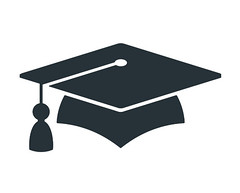 One of my goals for the ANA WFOM was to learn the selection process for the people who are
awarded honorary doctor of numismatics. I talked with several ANA staff members, Most said
they did not know, including the director of education. One answer I got was that the winners
were determined by the ANA executive director in consultation with the ANA board.
One of my goals for the ANA WFOM was to learn the selection process for the people who are
awarded honorary doctor of numismatics. I talked with several ANA staff members, Most said
they did not know, including the director of education. One answer I got was that the winners
were determined by the ANA executive director in consultation with the ANA board.
I found a moment to talk with ANA executive director Kim Kiick during the exhibit awards presentation. She said that Susan McMillan made the selection when she was responsible for the Summer Seminar. She was replaced by Amber Bradish for 2017-2018 and Brianna Victor for 2019-2021. In recent years the selection has been made by Kim and Jennifer Ackerman.
Someone told me that Jonathan Kern had a doctor of numismatics. I had heard that before but left him out of my previous article. Late in the show I looked up Jonathan. He confirmed that he had a bachelor's degree in numismatics. He had put together a curriculum for a topical major through an honors program at the University of Kentucky in 1971.
I spent some time talking with Ute Wartenberg-Kagan about the professional staff at the ANS. There are several with a Ph.D in a related field but not in numismatics."
Thanks. There have been various attempts to offer certificates and degrees in numismatics in the U.S., but the country is sadly lacking the academic degree programs which are common in Europe. The ANA's honorary doctor of numismatics is a long-running recognition of teaching service, not documentation of the completion of a course of study.
Dave provided these images sowing the different styles of certificates he's received over the tears as an instructor at the ANA's Summer Seminar. Thank you. -Editor
To read the earlier E-Sylum articles, see:
KYLE KNAPP AWARDED HONORARY DOCTORATE
(https://www.coinbooks.org/v27/esylum_v27n29a12.html)
ANA DOCTOR OF NUMISMATICS ROSTER
(https://www.coinbooks.org/v27/esylum_v27n31a12.html)
STAN KESSELMAN INTERVIEW, PART EIGHT
Here's the eighth and final part of Greg Bennick's interview for the Newman Numismatic Portal with New York dealer Stan Kesselman, where Stan talks about Milton Kaufman and Del Loy Hanson. -Editor
GREG BENNICK: So, any other stories, funny or otherwise, you've got about anybody else before we go?
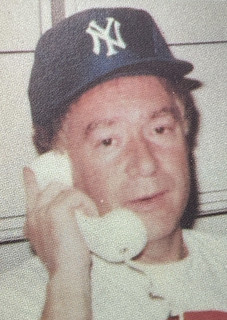 STANLEY KESSELMAN: There was a collector in New York. His name was Milton Kaufman and he collected gold coins and he was a builder. And in the basement of his building, maybe four-story building, he built a bank vault with a real bank vault door. And he put his coins in there on the wall because you like to look at them every day. And he had the best set of New Orleans twenties in the world. He had a set of CC twenties, Carson City twenties. And he just loved and he had them all in plastic holders. All in as a set. Max Humber from Paramount sold him the 1870 CC twenty, for $6,000. Nice, very fine. Anybody would have paid $6,000 for it at that point in time. But I guess he wanted to make the first coin, you know, affordable.
STANLEY KESSELMAN: There was a collector in New York. His name was Milton Kaufman and he collected gold coins and he was a builder. And in the basement of his building, maybe four-story building, he built a bank vault with a real bank vault door. And he put his coins in there on the wall because you like to look at them every day. And he had the best set of New Orleans twenties in the world. He had a set of CC twenties, Carson City twenties. And he just loved and he had them all in plastic holders. All in as a set. Max Humber from Paramount sold him the 1870 CC twenty, for $6,000. Nice, very fine. Anybody would have paid $6,000 for it at that point in time. But I guess he wanted to make the first coin, you know, affordable.
Max had somebody in Europe who went through all the banks and sent him all the coins. And they got the dates for free because the banks again didn't care what date it was. So, everything was fine. And we traveled, Milton and I, to Denver for the coin show. And I introduced him to Abe Kosoff. I said, Abe, this is my friend, Milton Kaufman. His checks are good.
You know. So, Abe says, I would have taken this check at any time, except now you told me about it, I don't know if I'm going to take it anymore because of the reference.
That's what he told him. Everybody laughed. It's just funny.
GREG BENNICK: It's great.
STANLEY KESSELMAN: So, Milton came back home. And one day, they tried to break into his building. They had jackhammers. They had a police scanner to scan the police radio. And they caught him. But he was so scared for his family. And everybody knew he had coins. They are valuable. He called me up and said he had to get rid of these coins within a week. And I called up Jerry Cohn again and Abner Kreisberg. Jerry Cohn bought the coins. And I charged Milton Kaufman $500 for the service. And Jerry Cohn said he paid me $500. And he came and picked up all the coins. But again, this was a time when the coin market was very bad. Yeah. And Jerry Cohn could not sell the coins at all. Milton Kaufman gave me the $500 immediately. Jerry Cohn never paid me the $500.
GREG BENNICK: Really?
STANLEY KESSELMAN: He said he lost money on the deal. And I never pressed it. You lose money, I don't want his $500.
GREG BENNICK: Sure.
STANLEY KESSELMAN: But the coins ended up going through very, very famous collections. I'm trying to remember. The guy from Virginia Beach, the dealer, what's his name?
GREG BENNICK: Del Loy Hanson.
STANLEY KESSELMAN: Yes. Yes, that's who it is. He ended up, there you go. He ended up with the coins.
GREG BENNICK: Yeah, Del Loy Hanson.
STANLEY KESSELMAN: And yeah, he ended up. And I have never met him, but I'm sure he has an unbelievable collection.
GREG BENNICK: Oh, it's incredible.
STANLEY KESSELMAN: Yeah. And Del Loy also was condition conscious. He improved coin by coin for a lot of times. And now they're selling his duplicates and all his other coins, which are also beautiful coins. His duplicates are fantastic.
GREG BENNICK: For sure.
STANLEY KESSELMAN: So, I guess that's about it that I can come up with.
GREG BENNICK: Well, this has been amazing. I appreciate you and your time and your story so much.
STANLEY KESSELMAN: I don't think I have any more, but that's it. It was a fun time. And the greatest part of the hobby was not the money, but meeting people from different places who were older than I was. And they educated me in different fields because they had better knowledge and they were older. And that was the fun. They spoke differently, had different values. Come from different places. But everybody was friendly with everybody else. It was wonderful relationships just to have.
GREG BENNICK: I love it.
STANLEY KESSELMAN: And every week I was on an airplane someplace else, either Beverly Hills or Dallas, Texas, meeting people. And it was a fun life. It's a wonderful hobby. And it's also a pleasure to have met you, you know, to do this.
GREG BENNICK: Absolutely. I appreciate you so much. I'm so glad we did.
For everybody listening. This has been an amazing interview with Stanley Kesselman. And I just really appreciate the time you've spent today. And a lot of people are really going to appreciate the stories you've told.
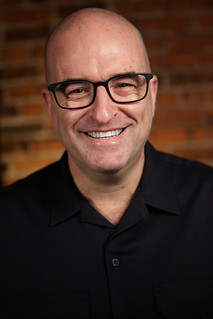 About the Interviewer
About the Interviewer
Greg Bennick (www.gregbennick.com) is a keynote speaker and long time coin collector with a focus on major mint error coins. Have ideas for other interviewees? Contact him anytime on the web or via instagram @minterrors.
To watch the complete video, see:
Stanley Kesselman Interviewed for the NNP by Greg Bennick
(https://nnp.wustl.edu/library/book/638521)
To read the complete transcript, see:
Stanley Kesselman Interviewed for the NNP by Greg Bennick (Transcript)
(https://nnp.wustl.edu/library/book/638520)
To read the earlier E-Sylum article, see:
STANLEY KESSELMAN INTERVIEW, PART ONE
(https://www.coinbooks.org/v27/esylum_v27n25a06.html)
STANLEY KESSELMAN INTERVIEW, PART TWO
(https://www.coinbooks.org/v27/esylum_v27n26a13.html)
STANLEY KESSELMAN INTERVIEW, PART THREE
(https://www.coinbooks.org/v27/esylum_v27n27a11.html)
STANLEY KESSELMAN INTERVIEW, PART FOUR
(https://www.coinbooks.org/v27/esylum_v27n28a17.html)
STANLEY KESSELMAN INTERVIEW, PART FIVE
(https://www.coinbooks.org/v27/esylum_v27n29a18.html)
STANLEY KESSELMAN INTERVIEW, PART SIX
(https://www.coinbooks.org/v27/esylum_v27n30a19.html)
STANLEY KESSELMAN INTERVIEW, PART SEVEN
(https://www.coinbooks.org/v27/esylum_v27n31a13.html)
ERIC SCHENA INTERVIEW, PART FIVE
Greg Bennick's latest interview for the Newman Numismatic Portal is with exonumia researcher and collector Eric Schena. Here's the fifth part, where Eric talks about his interest in ancient and medieval coins, how they are sometimes the only surviving documentation of certain rulers, and the state of primary source digitization. -Editor
 ERIC SCHENA: Yeah ancient and medieval central Asian, which is very important.
ERIC SCHENA: Yeah ancient and medieval central Asian, which is very important.
GREG BENNICK: Well, because when we met and I remember asking you that day. You mentioned ancient coins at the time and I have an interest in them as well. And I asked you what specifically? Well you started listing dynasties that I had never heard of. I didn't do poorly in school. I didn't do great all the time. But the dynasties that you mentioned had a lot of syllables and I didn't recognize any of them. Have at it and explain to us your collecting areas of interest in ancients and whatnot and mention a couple dynasties and impress us.
ERIC SCHENA: Sure. My specialty in fact my degree is in Greek and Roman archaeology. That's actually how I met my wife. She has the exact same degree. I do like Greek and Roman and Byzantine coins. But what's really interesting about some of the ancients are the ones that come out of Central Asia, and I'm talking about the Greco-Bactrian, the Indo-Greek, the Indo Scythian coinage and similar dynasties. The Hephthalites for instance, the Kushans, those dynasties out there. In many cases the names of the kings are only known from the coins. That is certainly the case with the later Indo-Greek coins. In fact, there was a Kushan king. He was only known as Soter Megas, which is great savior
in Greek.
Because most of the coins, the only title that was on them was Soter Megas. It was only through an inscription that was found in an archaeological site in the 1990s tied to a couple of bronze coins that the man's name was actually identified as Vima Takto. But the fact is, it was years and years and years, no idea who that man was. This king, we knew who he was, we can now put a name to him. And some of the other Indo-Greek kings, the order and the dating is entirely done by numismatics, because there's no archaeological evidence otherwise. So a lot of that is important and that translates to a different degree. Same discipline, but a different field with the tokens and store tokens.
With the ancients, finding those little pieces and knowing that you're holding a coin that is really the only written record of this particular king having ever ruled is fascinating. And this is especially important with the Islamic dynasties from that area as well. A lot of that stuff is not necessarily as well understood. In particular the Qarakhanids, the actual name that they called themselves is not known. Most people refer to them as the Ilaq Khans or Qarakhanid dynasty and they spanned a period of about two or three hundred years. This was around 1100, 1200, 1300 or so, probably a little on the earlier side of that. I know them mostly from the Hijri dating rather than the modern dating.
But hundreds upon hundreds upon hundreds of various little rulers, sub-rulers and other khans and sub-khanates and they're all over the place and how they all tie to each other and it's a science. It's an absolute science and a lot of that is not well understood anywhere. So, numismatics has an awful lot to contribute in places like that. It contributes here in the United States in preserving our history with tokens and also abroad with ancient coins and things like that.
GREG BENNICK: It's so cool.
ERIC SCHENA: Yeah, one of the things that I think Europe does, pretty interestingly enough is they treat numismatics as a scientific discipline and they actually have courses and you can get professorships in numismatics in several schools in Europe. I think that's very valuable. To them, it is exactly like a pottery specialist on an archaeological site. Because you have to have a specialist in that thing. Is this Samian redware or is it some other type of pottery? Because that might date the site and coins are very valuable for that, as well as pottery. And so, there is an importance with these little things that we use every day.
GREG BENNICK: Immensely so and you've expressed that so clearly and even just listening to you share these ideas, it becomes evident, that coins are not just tools that are made to pay for things. But there are tools for us archaeologically, historically in order to understand elements of the future or elements of the past which would not have lasted into the future had it not been for the coins themselves.
ERIC SCHENA: Exactly and there are an awful lot of institutions out there that don't have the manpower to do an awful lot of research that serious collectors of ancients and medieval coins or coins in general do on a regular basis. I mean a lot of the great collections of coins have been formed by private individuals. Who, through their generosity have made those collections publicly available for study and that has helped a lot of people and thankfully they get published in books like the Sylloge Nummorum Graecorum series, things like that. That's spreading that knowledge and that's very important and very crucial and something that I'm a very strong believer in.
I'm not particularly keen on withholding information, because I'm interested in something being worth more money than if I hold on to it and just hoard it. There's a lot of this stuff that has valuable information and that information deserves to be out there and shared. So I do like to share that information when I can find good things like that. And I have an open library policy with my friends who collect. They have anything that they want research in, let me know and they can go to my library at any time.
I have a fairly extensive library, mostly on tokens and other oddball stuff but I also have business directories. I don't know if you can see in the background, that is a microfiche reader. Yeah, I know! I have a microfiche reader. And right below it is a set of microfiche of business directories from 1800 to 1861 in the United States.
GREG BENNICK: Wow.
ERIC SCHENA: I know that's a blast from the 1980s.
GREG BENNICK: It's awesome. And I love it. And I'm going to utilize your offer for information requests, because there's going to be some point where I'm going to find a counterstamp and I'm going to wonder who was around and a merchant in Indiana in 1847. And you're the person I'm going to call.
ERIC SCHENA: If there's a business directory between 1800 and 1861, there's probably a good bet that I can get to it. But the thing is again, those things, that's all on microfiche. And this kind of goes with a lot of the technology and making sure this stuff doesn't get forgotten. Microfiche is not something that you see every day anymore. I'm a Gen X'er and any time I went to the library, I had to use those machines, both in high school and in college, but they all got supplanted with the internet. Don't need them anymore. It's all computerized. Now that technology is an obsolete technology and the knowledge of learning how to use those things is just going to disappear, because an awful lot of microfiche got thrown out. And so that's knowledge that just gets tossed, mainly because nobody has a reader, because where are you going to get a microfiche reader?
GREG BENNICK: That's true. But we also rely on the fact that that information is placed on the internet, meaning there might be tablets with cuneiform that exist in the world that have information on them that's just not yet on the internet. And there might be business directories from 1827 in your collection that aren't on the internet anywhere.
ERIC SCHENA: Exactly. That's exactly right. The digitization of early documents, something that the Newman Numismatic Portal has done fantastically, I might add, is a very important addition to scholarship. I know I've donated a few of my works for digitization, and I'm a firm believer in that. But you're exactly right. Those aren't going to be necessarily complete because who knows? There's probably some weird guy in Virginia who's got a stack of microfiche of these directories from Philadelphia from 1811, but they're all in microfiche. So, yeah.
GREG BENNICK: It's pretty amazing. I know that I've had interactions with the Newman Portal myself about this, because my dad wrote a compendium. I've mentioned this, I think in another interview. I can't recall. But my dad wrote a compendium of railroad and railroad-related metals and tokens. I think that's the exact title. A Compendium of U.S. and Canadian Railroad and Railroad-related Medals and Tokens, Including Bridge Medals and Tokens. Brevity of title selection was not his forte, but he wrote this compendium. And he sold copies of it. He printed it himself, and sold copies for years. And when he decided to sell his token and medal collection, he sold the collection. He got rid of all the books, sold them, gave them away, whatnot, and then deleted the computer files.
And I only found this out recently. I was asking him. I said, What happened to you? I've got a copy of the fourth issue of your compendium here. Where are the rest of them? To make a long story short, another story for another time, he told me. He said he got rid of the files, not out of malice. He just thought,
I don't need these anymore.
And I was like, well, then that information is lost. So, I've put it upon myself to find editions of each of the editions of his book. I've found now each of the extant editions of his book. And I'm going to be digitizing them for the Newman Numismatic Portal. And then sending physical copies to libraries because I've met people who have used this book and rely on it for information.
And the fact of the matter is, without the digitization, without the saving of the history, whether on microfiche or on Dave Bennick's printouts…my dad's work, it would be gone. It'd be lost. So, who knows what's in that microfiche collection of yours that doesn't exist anywhere else? I'm kind of fascinated by that.
 About the Interviewer
About the Interviewer
Greg Bennick (www.gregbennick.com) is a keynote speaker and long time coin collector with a focus on major mint error coins. Have ideas for other interviewees? Contact him anytime on the web or via instagram @minterrors.
To watch the complete video, see:
Eric Schena Interviewed for the NNP by Greg Bennick
(https://nnp.wustl.edu/library/book/639081)
To read the complete transcript, see:
Eric Schena Interviewed for the NNP by Greg Bennick (Transcript)
(https://nnp.wustl.edu/library/book/639095)
To read the earlier E-Sylum article, see:
ERIC SCHENA INTERVIEW, PART ONE
(https://www.coinbooks.org/v27/esylum_v27n28a18.html)
ERIC SCHENA INTERVIEW, PART TWO
(https://www.coinbooks.org/v27/esylum_v27n29a19.html)
ERIC SCHENA INTERVIEW, PART THREE
(https://www.coinbooks.org/v27/esylum_v27n30a20.html)
ERIC SCHENA INTERVIEW, PART FOUR
(https://www.coinbooks.org/v27/esylum_v27n31a14.html)
SUMMER 2024 ROSA AMERICANA SELECTIONS
E-Sylum supporter Jeff Rock of Rosa Americana, LTD has issued a new fixed price list #27 of U.S. colonial coins. To get your copy, contact Jeff at rosaamltd@gmail.com. Here are a few items that caught my eye. -Editor
Illustrated in The Colonial Newsletter, 2012
17. 1773 Virginia Halfpenny. Newman 27-J, W-1585. Period After GEORGIVS, 7 Harp Strings. Rarity-2 as a variety, Rarity-7 with obverse counterstamped R.P.S. About Uncirculated, a lovely coin with just light wear at the highpoints of either side, and exceptionally nice color and surface quality. While an AU Virginia is nothing too special, even one without the heavy spotting seen on many of the higher-grade examples from the famous Cohen Hoard, this coin is made far more special by the initials R.P.S. counterstamped at the center obverse. This counterstamp was done with a logotype punch, not individual letters, and is not found on any coin other than Virginia coppers. In the December 2012 issue of The Colonial Newsletter (now available for free on the Newman Numismatic Portal), Roger Moore and Dennis Wierzba illustrate 9 examples (including this, which is Illustration F on Plate 2), and note the existence of a couple more that they were not able to have photographed. With a dozen or so known to the authors, the existence of a few more pieces is certain, so there are perhaps 15 or so examples of this counterstamp known. All examples seen are in high grade (EF at the minimum), and all have the R.P.S, counterstamp centered on the obverse, punched vertically (a few show more than one punch, and one has the counterstamp rotated so that the R is at the bottom of the coin and the S at the top). There was clearly some care given to the placement of the counterstamp, and that care may have gone into the selection of the host coins as well, as all 9 examples illustrated in the CNL article are high grade, with clean, smooth surfaces, including one that was later holed. The authors discount the possibility of this being a merchant or tradesman's counterstamp and instead propose that these were actually done for use as communion tokens, possibly by the Reformed Presbyterian Synod – R.P.S. – of Pennsylvania. Some of the churches that splintered from that group were in an area that later became West Virginia, and the printed history of those churches mention the use of communion tokens but does not describe them, which certainly adds credence to the theory. Communion tokens were in wide use at the time, and several types are known for North America, the most famous being the Albany Church Pennies. The Virginia halfpennies with the R.P.S. countermark are known on just four varieties – Newman 23-Q. 25-M, 26-Y, and 27-J. The authors also suggest the counterstamps were applied in the 1775-1810 period, on coins pulled from circulation, with the light wear on known specimens from their gentle use within the church. A fascinating and rare issue, we note none were in the Syd Martin collection of Virginia halfpennies.
$900
1787 INDIAN/NEW YORK ARMS
Only 15 Examples Known in all grades
The EF Details Ted Craige Coin – offered at
well under half what it brought at auction in 2013!
49. 1787 Excelsior Copper. W-5795. Rarity-6+. Indian / New York Arms. PCGS Graded EF Details--Environmental Damage, an accurate grade. This is the Ted Craige example of this rarity, a coin that was off the market for nearly a half century between the time Craige purchased it as a dealer and when it was offered in the Stack's Bowers March 2013 sale of his collection, as Lot 314, where it was described as:
100.31 grains. Charcoal-gray and brown with fine surface granularity akin to burial patina or fire scale. Some raised metal specks on the obverse are consistent with heat exposure, mostly scattered around the lower half of the obverse. The sharpness is excellent on both sides; centering is typical with a few denticles visible in the upper right obverse. One of the classic rarities of the Confederation era, with the distinctive Standing Indian design and his accompanying motto LIBER NATUS LIBERTATEM DEFENDO or "Born free, I defend freedom." This issue is thought to have been coined as a pattern in one of the efforts to land a state coinage contract from New York; no state contract was ever awarded. John Ford extensively researched this issue and kept a careful census of it; he counted a dozen specimens, though it is difficult to tell which of his entries (if any) matches up with this one. Ford did note that Mrs. Norweb owned a "VG, corroded" specimen, but no such coin ever turned up in the Norweb sales. Did Mrs. Norweb spin it off to Ted Craige via their mutual favorite dealer Richard Picker in the hopes of getting a better one someday? Or did Ford simply see one somewhere and misremember where he saw it? Ford's own piece sold for just $63,250 in 2004, a seeming bargain considering Garrett's brought $21,000 hammer in 1979. Either Garrett's or Ford's would be a six-figure coin today. This one represents a somewhat different price point that should be very attractive to most collectors who seek an example of this famous rarity. Mr. Craige priced this example at $2,500 circa 1970.
Provenance: From the Ted L. Craige Collection. Paper envelope included.
The coin sold for a strong $55,812.50 in spirited bidding – understandable perhaps, as it had been some time since a higher-grade example had come up for auction, though in the decade since this one sold more examples crossed the auction block than in the previous half century combined, the result of major collections coming onto the market.
Previous census lists have been woefully incomplete, and we have spent several days updating it. There are 15 examples of this issue now known, with the present coin right in the middle of the census;
1. MS64. Louis E. Eliasberg, Sr. (Bowers and Merena, 5/1996), lot 58 at $143,000. Sold as
MS65 in the Eliasberg sale, NGC graded MS64 when sold in the Don Partrick collection
(Heritage, 1/2021), lot 3932 for an amazing $204,000. This is likely the J.N.T. Levick coin
(Woodward 10/1864), lot 1543 described as uncirculated, portions of the copper still bright,
without a doubt the finest existing specimen of this very rare coin.
It brought $73 to Putnam.
2. Choice AU. Sarah Sophia Banks (1818); British Museum. Listed as Banks-59 in this author's exploration of the colonial coins in her collection, Journal of Early American Numismatics, June 2020 (Vol. 3, No. 1), p. 105. It was noted there that Miss Banks was aware that this was a pattern issue when she acquired the coin, likely in the 1790s.
3. Choice AU. Lorin G. Parmelee (New York Coin & Stamp Co., 6/1890), lot 457; H.P. Smith
(Chapman Brothers, 6/1906), lot 124; Col. James W. Ellsworth; John Work Garrett; Johns
Hopkins University (Bowers and Ruddy, 11/1979), lot 601. Graded EF40 in the Garrett sale, we
note that Ford called this one VF!
4. AU50 PCGS, lightly cleaned. Eric P. Newman (Heritage, 11/2014), lot 3028, realized
$88,125; (Heritage 1/16), lot 1231 at $73,437.50; (Heritage 8/16), lot 3932 at $64,625.
5. AU53 NGC, some notable roughness at top half of the obverse. Harlan P. Smith (S.H. & H.
Chapman, 5/1906, lot 124, graded EF, at a strong $130; William Sumner Appleton;
Massachusetts Historical Society; ANA Sale (Stack's, 8/1976), lot 72; Baltimore Auction
(Stack's Bowers, 10/2018) at $48,000, lot 7090; Dickson (Heritage 8/21), lot 3293, selling for
$50,400. Yes, the slab grade is a bit higher than the Newman and Garrett coins above, but those
are nicer in every respect, and do not have the rough obverse surfaces that this AU53 has.
6. XF. F.C.C. Boyd Estate; John J. Ford, Jr. (Stack's, 5/2004), lot 312, at $60,500. Oddly, Ford was able to find no previous provenance for this coin.
7. XF. Joseph Mickley (Woodward, 10/1867) at $90; Charles Ira Bushnell (S.H. & H. Chapman,
6/1882), lot 888, described as purple brown color
and bringing $105 to Allison W. Jackman,
but not included in the H. Chapman sale of that collection 6/1918; possibly traded away: we note that Jackman purchased the George Clinton cent the lot before this in the Bushnell sale as well, but the one sold in his collection was a private sale from Dr. Hall.
Later in the Brand Collection. Only the obverse was photographed on the Bushnell auction plates, and the centering does not appear to match any of the above coins.
8. XF Details PCGS, the present coin, ex Ted Craige collection. Likely not the piece thought to be ex Norweb (see number 13 and 14 below). One can debate where in the census it ranks due to the details vs. straight grade. Sold in the Craige sale for $55,812.50.
9. VF30 PCGS. Alexander Bache (Woodward, 3/1865) described as very fine indeed, but little circulated,
selling for $77.50; Heman Ely (Woodward, 1/1884), lot 1013 selling for $75. Peter Gschwend (collection purchased intact by William H. Woodin, then consigned for auction to Elder 6/1908), lot 87; F.C.C. Boyd Collection; Boyd Estate to New Netherlands Coin Company on April 25, 1958; John L. Roper (Stack's 12/83), lot 275; Americana sale (Stack's 1/98), lot 198; (Stack's 5/07), lot 521 (at $103,500!); Syd Martin (Stack's 3/23), lot 1083, at $36,000. The Ely plate shows only the obverse, but the centering and strike match.
10. VF20 PCGS John G. Mills Collection (Chapman Brothers, 4/1904), lot 348; John Story
Jenks Collection (Henry Chapman, 12/1921), lot 5493; Donald Groves (Partrick) Sale (Stack's,
11/1974), lot 336; Henry P. Kendall Foundation (Stack's, 3/2015), lot 2511, at $58,750; Willis
(Heritage 8/17), lot 3828, sold for $47,000. Earlier census listings erroneously called the Mills and Jenks listings different coins, but they are in fact the same.
11. VF details, very flawed planchet. Charles Clay (William Strobridge, 12/1871), lot 89,
realizing $27. James Ten Eyck (B. Max Mehl, 5/1922), lot 816. Described as Struck on an
imperfect planchet, obliterating LIBER NATUS on obverse, and part of Figure on reverse,
otherwise Fine. Ford graded it Good, and said the coin was filed, not weakly struck on a flawed planchet; the surviving detail would likely grade VF today, and it appears the weakness is as struck; it brought $21 in 1922, but has not been seen since.
12. Fine, holed. Matthew Stickney (Henry Chapman, 6/1907), lot 240. Called Good. Bad hole
below Indian's feet,
it realized $10. The plate shows a coin of near VF detail, the hole quite large and near the lower rim, causing a bulge there. Later W. B. Guy (Henry Chapman,
11/1911), lot 75, realizing $7.50. The coin was later plugged, the bulging edge filed down, and tooled, strengthening some of the lettering at the left obverse; later in New Netherlands Coins 44th Sale (6/54, lot 71), graded VG, with the plug noted. In previous censuses this was called two different coins, but is indeed the same specimen.
13. VG. Henry Dittmer, lightly rough (Heritage 5/11), lot 3687, selling for $20,400. This or the following coin, is likely the piece that Ford said was part of the Norweb collection (called VG corroded), and not the Craige piece offered here, as was surmised in that catalogue – not even Ford would have called the Craige piece a VG!
14. VG8 PCGS (Heritage 8/22), lot 3861, sold for $25,200, later (Heritage 1/24), lot 4001, sold for $22,800 – no prior provenance noted, but could also be the ex-Norweb piece mentioned
above.
15. Likely Good or so. Thomas Warner (S.H. & H., 6/1884, though erroneously listed in
previous censuses as the Mrs. Warner sale of 7/1891), lot 2094. Graded Poor, word NATUS
not visible.
While a couple of the pieces listed above have NATUS weak, it is visible on all of them, so this likely represents an example that has not been seen in over a century.
There are also a couple coins that have not been firmly traced, but which are likely examples listed above, with these early links of their provenance chains now lost.
X1. Likely EF or better. McCoy (Woodward 5/1864), lot 1763, described as of extreme
fineness,
realizing $82.50, selling to Dunbar.
Given the grade this may be the Mickley coin
or any of the ones listed above it, save for Miss Banks's specimen.
X2. Unknown Grade. Jeremiah Colburn (W. Elliot Woodward, 5/1863), lot 2053. Described
as not in fine condition, but good for so rare a colonial.
It brought $30, just $5 less than what a
decent Higley copper realized. This is probably the same coin that was offered in Woodward's sale of his own collection five months later (10/1863), lot 2627, where it was described as in
ordinary or rather poor condition
and realized $22. Likely offered again by Woodward
(12/1865), lot 1732 where it was described as from the Haines collection; not in fine condition,
but still a desirable piece), where it only brought $12; this is likely Ferguson Haines who may
have purchased it at the second auction noted. Haines conducted a sale of his own collection in
1877, and consigned to other auctioneers in the 1880s and 1890s; he was married in June 1865
and one wonders if he needed to sell some coins to please his new bride, consigning the piece
back to Woodward, but getting barely half what he paid for it two years earlier. This is likely
one of the final three pieces listed above, though as it was unplated in any of these Woodward
auctions, it is unknown which one.
A very rare coin in any condition, and one that is always in demand by advanced collectors – and, a perusal of the above detailed census list will show that many famous collectors of the past lacked it in any grade whatsoever. Amazingly, nine of the fifteen known examples have crossed the auction block in the last 20 years, a quantity coming up for sale in a short period of time that has not been matched since the 1865-1885 era. Rarities like this tend to get locked up in major collections, and are off the market for decades – and when one appears after a long dry spell, the bidding can be furious! Such was the case for this example, which brought under 10% less than the much nicer Ford coin, sold just nine years earlier – but it was also the only example offered at auction in that time, and that created great collector interest. Prices fell as a few more came out, but it will likely be some time before another example is offered – and if there is a long wait before that happens, the bidding will be furious. With more recent auction records of much lower-grade and rough specimens at over $20,000 (see coins 13 and 14 above), and a straight- graded VF at nearly $60,000 (coin 10), and a previous prices realized of over $55,000 for this exact coin, some lucky collector may get the bargain of the year at our price of only……
$20,000
In the PCGS slab as pictured.
PCGS AU53, ex Lawrence Stack Collection
59. "1781" (ca. 1820) North American Token. W-13980. Rarity-2. PCGS Graded AU-53, though really any grade up to MS63 would have been warranted. This is Syd Martin's example, the nicest that he was ever able to find = and he considered it a full Uncirculated pieces, as noted on his envelope which accompanies the coin. When sold as Lot 1272 of the 2023 C4 sale, this was catalogued by Stack's Bowers as:
Though dated 1781, the North American token is thought to actually date to the 1810-1820 period, as evidenced by ca.1820 Canadian tokens of similar design and fabric as well as punch linkage (discovered by Doug Winter, now known as a U.S. gold coin specialist) to Irish tokens from the second decade of the 19th century. Winter also theorized that the 1781 date commemorated Cornwallis' surrender at Yorktown, though we find this strange for a token whose chief circulation was in Canada, the land to which loyalists escaped the Revolution! This is a superior example of the type, with luster and golden-brown patina, and though graded AU-53, it compares favorably to examples in the AU-55 to AU-58 range.
Provenance: From the Sydney F. Martin Collection. Earlier ex the Lawrence R. Stack Collection, November 2006.
A common token, in decidedly uncommon condition. While neither grading service has certified a fully Uncirculated one, this and a few others known that have been graded AU do not show any actual wear, just a bit flatness of strike on the seated figure's head – detail which is never found fully struck up. The highest grade example slabbed is a PCGS AU58 that brought nearly $4,500 in a 2017 Heritage sale – and that piece was distinctly weaker than this one, which shows more detail in the seated figure's gown, and the hull and sails of the ship – certainly a candidate for regrading! An AU58 in brass, in the same firm's July 2006 auction brought a similar price and it too was far weaker than this specimen. The fact that Syd considered this a full Unc., and had the resources to upgrade if he saw a nicer one, speaks volumes. This is the finest North American token we have ever seen, and would comfortably fit into the finest colonial collection
$1,750
In the special Syd Martin PCGS holder as pictured, accompanied by Syd's original handwritten envelope where he calls this Unc., and the original round ticket from Larry Stack.
To read the earlier E-Sylum article, see:
SUMMER 2024 ROSA AMERICANA FIXED PRICE LIST
(https://www.coinbooks.org/v27/esylum_v27n30a21.html)
HERITAGE SHIPWRECK & TREASURE COINS SALE
An article from Heritage highlights several interesting lots in their upcoming Shipwreck & Treasure World Coins sale. -Editor
Our August 19 Spotlight: Shipwreck & Treasure World Coins Showcase Auction is a captivating auction dedicated to the treasures salvaged from the depths of history. This showcase features an array of gold "Finger" bars and Rincón 2 and 4 Reales from the famed "Golden Fleece" shipwreck. Additionally, you will find various gold and silver issues recovered from the historic 1715 Fleet, along with a remarkable Tumbaga bar, detailed below. The auction also includes fascinating examples from Spanish and Dutch shipwrecks, offering collectors and enthusiasts a unique glimpse into the nautical past.
The Tumbaga bar referenced above is a quite curious example and one of a few extant lacking original assayer markers. At 3.88 lbs, it measures 236x62x15mm. It was salvaged from the "Tumbaga wreck" (c. 1528 off Grand Bahama Island), nicknamed after the vast amount of Tumbaga pieces recovered. The Tumbaga, a term learnt by Conquistadors in their first expeditions, were low-fineness, gold or silver ornate relics treasured by original American cultures. From idols to jewelry, mortuary masks to ceremonial ornaments, these were the first precious metal spoils looted by the Spaniards during their incursions into the continent. Though a few intricate and lavish pieces were brought back to Spain, most were crudely melted down — some theorizing they used the native's methods of casting — and swiftly shipped to the King.
The "Tumbaga Wreck" is from perhaps the oldest shipwreck treasure yet unearthed in the New World. Before the salvaging of the wreck, in the early 1990's, little to no study had been done regarding these early, important pieces. Douglas R. Armstrong was hired by Marex, the salvaging company, to conserve about 200 bars retrieved. Armstrong promptly realized how important the discovery was and took the opportunity to do a thorough study of this unprecedented group of bars. An extensive analysis of the stamps and purity of the pieces made it possible to better understand these archaic Numismatic items from the first European settlers to dare conquer the Americas.
Philip III "Atocha" Cob 8 Reales ND (1612-1616) P-Q AU (Saltwater Effect), Potosi mint, KM10, Cal-916. 26.20gm. Grade 3. Salvaged from the "Nuestra Señora de Atocha" (sunk in 1622 off Key West, Florida). Surprisingly detailed given the saltwater exposure. Offering notable luminosity and saturated peripheral tone.
Sold with original tag and Treasure Salvors photo-certificate 85A-198922
The Nuestra Señora de Atocha was the Admiral Galleon of the Tierra Firme Fleet, a twenty-eight-ship fleet carrying an unprecedented amount of treasure from the Americas. Sailing from Havana bound to Spain on the 4th of September 1622, the armada was hit by a massive hurricane in the Florida Keys, most of the fleet being decimated and the treasure sinking to the Atlantic seabed. The Spanish efforts to retrieve the precious cargo weren't fruitful, which led to the scattering of the vast amount of treasure across the Florida coast with subsequent hurricanes. The original manifesto of the Atocha was impressive: 24 tons of silver in 1038 ingots, 180,000 Pesos in silver coins, 582 copper ingots, 125 gold bars and discs, 1,200 pounds of worked silverware and other goods; and that's only what was officially transported, since smuggling treasure to avoid taxes was very common in the period, with some estimating that a large percentage of the total cargo was in contraband. In 1969, treasure hunter Mel Fisher began a long-lasting, 16-year quest to locate the treasure. Over the years, isolated coins and artifacts were found scattered across Florida's "treasure coast", many given to investors who funded the operation. In 1973 three silver bars were found and matched to the original 17th century manifesto, leading the crew closer to the main wreck site. By 1980 a significant part of the Santa Margarita had been located, counting with gold bars, silver coins and jewelry. On July 20th, 1985, the motherlode was located, when divers found a "reef of bars". The main pile of the Atocha provided countless artifacts which quickly became immersed in Florida's pop culture and would later become perhaps the world's most famous shipwreck treasure in history.
To read the complete item description, see:
Philip III "Atocha" Cob 8 Reales ND (1612-1616) P-Q AU (Saltwater Effect),
(https://coins.ha.com/itm/bolivia/bolivia-philip-iii-atocha-cob-8-reales-nd-1612-1616-p-q-au-saltwater-effect-/a/61405-21012.s)
Charles III Pretender gold "1715 Fleet" Cob 2 Escudos (1700-1714)-ARC MS64 NGC, Santa Fe de Nuevo Reino mint, Cal-Type 242. 6.6gm. Arce as assayer. 300th Anniversary Find. Luminous specimen with deep engraving to the visible motifs. Only three examples are presently certified higher at NGC, conditionally scarce thus. Accompanied by photo COA.
Cataloged by some as a posthumous issue of Charles II, under the reign of Philip V, this piece was in fact struck under the influence of the Holy Roman Emperor Charles VI, who partially reigned Spain during the 14-year war of succession that followed the death of Charles II. He was accepted in Catalonia, where he stayed for 6 years, until the death of his brother made him return to Vienna to be crowned Emperor, leaving the throne to Philip V.
On July 30th, 1715, a Spanish treasure fleet, which would later be famously known as the 1715 Fleet, encountered a hurricane that claimed a sizable portion of its galleons and crew. A reported 1,000 lives and 14 million pesos were lost, including an equal amount of treasure in contraband. It's hard to estimate the value lost when measured in today's currency, but one can imagine the extensive caliber of cargo when considering the convoy was a combination of two different fleets: the Nueva España Fleet, which got stuck in Veracruz for two years before it could join the Tierra Firme Fleet. After more delays in Havana, a 12-13 ship convoy left with an enormous amount of accumulated cargo, never to reach Spain. The Spaniards salvaged the wreck for a few years afterwards, recovering nearly half of the official cargo from shallow-water wreck sites. Modern salvaging began when Florida resident Kip Wagner found a "piece of eight" at a beach after a hurricane and was intrigued by its origins. With old maps, metal detectors, a small plane, and a permit from the state of Florida, Wagner located wreck sites and artifacts, ultimately putting together a team of archeologists, divers, and investors. This was the beginning of the Real Eight Company. As the Real Eight team combed the seabed with suction machines, they found jewels, emeralds, Chinese porcelain, silverware, and gold & silver ingots. Furthermore, they found as many as 10,000 gold Cobs and over 100,000 silver Cobs. These huge discoveries uncovered yet-unknown numismatic pieces and ultimately made rare gold Cobs "common" (though still very high-end for collectors). The salvaged coins were mainly from Mexico, Colombia, Peru, and Bolivia, minted primarily between 1711 and 1715, although numerous earlier pieces from the 1600's were also recovered. As modern salvaging continues in these underwater sites, we expect many more exciting discoveries to be made, including the recovery of the last five or six ships that have yet to be found.
To read the complete item description, see:
(1700-1714) Charles III Pretender gold "1715 Fleet" Cob 2 Escudos
(https://coins.ha.com/itm/colombia/colombia-charles-iii-pretender-gold-1715-fleet-cob-2-escudos-1700-1714-arc-ms64-ngc-/a/61405-21073.s)
Charles & Johanna "Golden Fleece Shipwreck" gold cut "Finger" Bar of 53.37gm ND (c. 1550), 30x25x13mm 53.37m. XRF scan: 20K. An enchanting piece cut from the end of a larger ingot and bearing the full XX stamp for 20K. One can still appreciate the bits of coral encrustation from the nearly 450 years under the seas. At this time, gold was not yet struck in coins, thus why larger ingots were chiseled/cut into smaller bits for change in trade. According to consignor, salvaged from the Golden Fleece shipwreck
The Golden Fleece shipwreck is a vessel in the northern Caribbean nicknamed for a royal stamping, known as Golden Fleece, that was found on several of the gold 'finger' ingots and coins. A few dozen of these gold and silver ingots were salvaged with varying purities, reminiscent of the famous "tumbaga" bars. Significantly, it is believed that the Golden Fleece ingots are the only known examples made in the colonies between the "tumbaga" era of the 1520s and the ones found on the 1554 Padre Island Fleet. Almost all the recovered coins are Mexican Carlos-Juana silver pieces (all assayers prior to S) apart from some extremely rare Santo Domingo pieces. Notably, three examples of the very first 8 Reales ever struck in the New World were found - the Rincón "Early Series" 8 Reales of 1538.
To read the complete item description, see:
(c. 1550) Charles & Johanna Gold Cut "Finger" Bar
(https://coins.ha.com/itm/mexico/mexico-charles-and-johanna-golden-fleece-shipwreck-gold-cut-finger-bar-of-5337gm-nd-c-1550-/a/61405-21113.s)
Philip II Cob 8 Reales 1590 T-M AU55 NGC, Toledo mint, Cal-752. 27.51gm. Date at beginning of obverse legend. A scarce piece, here presented with well-struck peripheries with radiant crevices and very round flan.
To read the complete item description, see:
1590 Philip II Cob 8 Reales
(https://coins.ha.com/itm/spain/spain-philip-ii-cob-8-reales-1590-t-m-au55-ngc-/a/61405-21247.s)
THE COLLECTION OF LUCIUS S. RUDER
Stack's Bowers announced their upcoming sale of the Lucius S. Ruder collection, an important old-time collection long off the market. -Editor
Stack's Bowers Galleries is proud to present another superior selection from the Collection of Lucius S. Ruder in their August 2024 Global Showcase Auction. Lucius S. Ruder was born in Hamilton, Ohio, on September 18, 1901. A quiet, intellectual, punctilious businessman with deep ancestral roots in Butler County, Ohio, he was a director and part owner of the Cincinnati Sheet Metal and Roofing Company. Mr. Ruder was also active in banking circles acting as a director of The First National Bank of Hamilton, Ohio, and the Bank of Clearwater in Clearwater, Florida, where he established a home in the years following his volunteer service as a Lieutenant Colonel in the Air Force in World War II.
Paralleling his interests in history and economics, Mr. Ruder's numismatic activities began with the purchase of an extensive coin collection from the estate of Dr. Philip Holmes, a prominent Chicago surgeon and lifelong collector who had amassed the bulk of his collection in the 1920s. Mr. Ruder easily doubled the size and quality of this collection over the years unobtrusively drawing on multiple sources and broadening his interests to include Washington medals, tokens, and foreign coins.
The current selection from the Ruder Collection is marked by a magnificent array of U.S. and British rarities that are appearing publicly for the first time in many decades. The U.S. coins include a trio of legendary issues beginning with an 1854-D three dollar gold piece graded AU-50 (PCGS). As the only three-dollar gold piece struck at the Dahlonega Mint, this issue is extremely prized by collectors and typically found in grades of EF-45 or lower. The Wire Rim 1907 Pattern Indian eagle is particularly important as an example of the Irregular Edge variety. This variety is extremely rare and only four are known, three of which are in the National Numismatic Collection at the Smithsonian Institution. This is the only example graded by PCGS and is potentially unique in private hands. Also featured is a truly superior 1849 Mormon $2.50 graded AU-50 (PCGS) and approved by CAC.
The British coins offer a similar parade of rarity, headlined by a dazzling 1729 East India Company
5 Guineas graded MS-61 (PCGS). A lustrous AU-55 (PCGS) Edward III Noble also anchors the British gold, while the silver coins are highlighted by 1642 Oxford 1 Pound and ½ Pound coins struck under Charles I.
To read the complete article, see:
The Collection of Lucius S. Ruder
(https://auctions.stacksbowers.com/lots?sort=auction_date_lot_number_asc
&limit=36&search=Lucius+S.+Ruder&lots_range=upcoming)
NOONAN'S OFFERS UNIQUE EDWARD VII GOLD RUPEE
In October Noonan's will be offering Part II of the Puddester Collection, including the only known genuine Indian gold rupee coin bearing the uncrowned portrait of Edward VII. -Editor
The only known genuine Indian gold rupee coin bearing the uncrowned portrait of Edward VII is among the rare and unique Indian coins that will be offered by Noonans Mayfair on Tuesday and Wednesday, October 1 & 2, 2024. Estimated to fetch £15,000-20,000, the coin is from Part II of the Puddester Collection which is expected to fetch in the region of £750,000.
Peter Preston-Morley, Special Projects Director (Numismatics) at Noonans explained: We are very pleased to be offering the second part of the Puddester Collection which focuses on the Uniform Coinage of India 1835-1947, starting with East India Company rule from 1835, and then issues of the Government of India from 1858 until independence in 1947.
He continues: The Puddester collection is vast, and this is the second of nine auctions that Noonans will be staging over the next few years. Part One fetched a hammer price of £1,581,800 when it was sold in February 2023. Mr Puddester, who lives in Canada and started collecting in the 1970s, hopes that this and the succeeding auctions will encourage a new generation of enthusiasts to build their own collections within India and further afield.
Part II comprises 1,181 coins that will be sold in over 700 lots. Highlights include a unique original striking in gold of an Edward VII Rupee, dating from 1903 from the Calcutta mint [lot 1191].
As Mr Preston-Morley added: Nothing has been recorded of this type before and the background to this exceptional piece is not known, but it can only be assumed that the original owner was a high-ranking official at the Calcutta mint, perhaps its Master, Col. Sir Buchanan Scott (1850-1937), who was in post from 1897 to 1904.
An excessively rare and the finest known experimental silver Rupee of 1939 from the reign of George VI - believed to be the finest of the few known specimens in private hands - is estimated at £20,000-£30,000 [lot 1229].
The 1939-dated rupees with security edges have always been regarded as one of the famed prizes in Indian numismatics
says Mr Preston-Morley, Very few specimens, almost certainly less than 10, are known.
Elsewhere an extremely rare gold Double-Mohur from 1835 and the reign of William IV is estimated at £15,000-£20,000 [lot 908].
Mr Preston-Morley puts it into context: After some initial objections to the featuring of an animal on the reverses of the new gold coins, Sir Charles Metcalfe (1785-1846), the acting Governor-General, ordered that Flaxman's lion be adopted and so dies were prepared in December 1835 and the first mohurs and double-mohurs entered circulation on New Year's Day, 1836. By the end of 1837 only 1,174 double-mohurs had been struck, of which perhaps 20 exist today, many in institutional collections.
For more information, see:
https://www.noonans.co.uk/
WAYNE'S NUMISMATIC DIARY: AUGUST 11, 2024, PART I
The big week finally arrived - the American Numismatic Association summer convention, a.k.a the World's Fair of Money®. A little game I play is to see who's the first old numismatic friend I encounter at the show. Often this happens when checking into my hotel, or even before leaving the airport. This year it took until I entered the bourse floor where my good old friend Pat McBride from Pittsburgh was set up in costume as Ben Franklin. I was in costume as a Taylor Swift concertgoer.
A close second was Brett Irick, and Pat and I chatted with him.
The bourse floor was huge, packed, busy and loud. Lots of business taking place.
I made a beeline to the Numismatic Bibliomania Society table, where I found Jeff Dickerson hard at work creating book boxes, accompanied by President Len Augsburger and past President Tom Harrison. I gave Len a package containing a couple new numismatic ephemera acquisitions for digitization at the Newman Portal.
Charlie Davis
Nearby were the tables of literature dealer Charlie Davis and Kolbe & Fanning. Here are some photos of Charlie's table.
At my request Charlie kindly gave me a closer look at two books with embossed and colored plates.
John Dannreuther
I ran into JD and he showed me and Fred Holabird bound page proofs of his upcoming volume on proof silver coinage.
JD explained that Mint records show that three different obverse dies were used for this date. Proving that and writing up this entry took a full two days. This is why numismatic books are worth every penny one pays.
Fred Holabird
Fred Holabird was sharing a table with Jeff Shevlin, where I also found my good friend Dave Schenkman. On display were selected lots from Fred's upcoming sale. More on these next week - some great long-off-the-market material.
I'll need to stop there for this week, but stay tuned for more in the next issue.
THE MARITIME SILK ROAD
Ted Puls submitted this article with more information on the Maritime Silk Road. -Editor
A new Chinese trade initiative has started recently called the Belt and Road initiative to counter the Transpacific Partnership of the United States. The proposed maritime trade routes and partnerships proposed really are not new, and have been used for thousands of years. Archeologists are just starting to explore the areas involved in this trade, however numismatic evidence has been long known. Our traditional idea of the land Silk Road was named in the 19th century and prior to this this trade route didn't have a specific name or this romantic sound, but was a path connecting regional trade routes.
Trade was initially encouraged along this longer and connected route by Emperor Wu (141-87B.C.) of the Han dynasty in China. The sites along this route have been studied much more than the maritime route now being called the Maritime Silk road. The maritime route was more influential and allowed much more valuable trade through most of its history. Camels were the main mode for carrying goods along much of the land Silk Road while the Maritime Silk Road used ships. Ships of the time have been found that could carry 1000 tons of valuable trade goods (sciencep1445) or the load of 1000 camels. Some ships were found that could carry 500 or more passengers. Just like caravan cities, port cities were founded to support and protect this lucrative trade (4, p1). Identifying coins required to support this trade is a challenging numismatic adventure.
Emperor Wu's accomplishment was connecting the already existing Persian Royal roads with other Central Asian trade routes and exerted military and diplomatic power to permit trade with the West. This power did wax and wane over time, and forced or encouraged trade via the ocean. Even before Emperor Wu the maritime trade had started, though somewhat in pieces. Recent archeologic study shows that South East Asia, once thought to be a backwater, was actually an important part of world commerce during this time. The Important Khmer culture at Ankor Wat formed and established a trading port at Khao Sam Kaeo to allow imports to feed needs of the wealthy during the period 400 B.C. to ca 100 A.D.(6. 1442). Goods discovered there were made in Vietnam, India, and China. To the west, India had trade with Somalia and Middle East ports as well as the East. A Roman writer of the first century wrote about where to get cinnamon and slaves in Somalia, cotton and sesame oil in India and describes sources of silk (6. p1443) Italian excavations of a Roman cargo ship at Anzio in the 1930's revealed a Shang Dynasty (c.a. 1200B.C.) bronze vessel. (1. p26).
Dramatically increased trade during the Han
Dynasty connected China to Vietnam ports with Indonesian ports connected with India, Middle
East and African traders during this time to make a Maritime Silk Road. During the Han era the
shipping was mostly done by Arab trading ships visiting all these ports and leaving wrecked
ships as evidence of their presence and of the goods transported. Roman coins are found as far
east as Vietnam (6. 1443). The popularity of the maritime route was augmented by the persistent Roman problem with the Persians and Parthians cutting off silk supplies coveted by
the Roman nobility. Despite this obstacle, the silk trade was large enough to require regulations
about who could wear silk to save the Roman economy from sending all its precious metal
currency to the East. This trade caused a unique monetary time for the Chinese government
which produced large gold coins as opposed to the usual silver-bronze economy during this
early period of trade. Probably due to Arab traders not being familiar with Chinese currency, I
haven't heard of Han dynasty coins being found in these ports (they were certainly found and
copied on the land route). The importance of Chinese coins would change with the next phase
of the Maritime Silk Road. The first coin with a connection to the silk road trade were the
White metal
Chinese coins. These were produced in 119 B.C, the year Emperor Wu
dispatched his ambassador to start formal trade on the land route. The dragon coin of 3000
cash value was one of three denominations made this year, and soon replaced by the Wu Zhu
coin in 118 B.C. The Wu Zhu coin was to be used for the next 1000 years in trade.
The maritime trade and use of Wu Zhu never ceased but with the waning of the Han dynasty the protection of the Silk Road traders also waned, as did the trade, until another powerful dynasty arose. The Tang Dynasty succeeded in unifying China and controlling the areas around China so that trade was again increased. During Tang times, silk trade continued, but two new top secret products were sold. One, called porcelain was made by processes not known outside of China until the 18th century. Tea was another valuable export to be traded widely (connected to the establishment of Buddhism-allowing extended meditation). As the method of production of these items was unknown, China had a set of valuable monopolies. By this time the Tang had established shipbuilding of seafaring ships and Tang Dynasty ships were noted to be trading in Africa and Egypt. Period Chinese porcelain is found in these areas and was purchased with ivory and ambergris from Africa. Arab writers in the era recorded Chinese ships that could carry 600-700 passengers, and that these ships were too big to navigate into the Euphrates River (4. p6).
The predominant coin of the Tang Dynasty was the long lived Kai Yuan coinage which finally replaced the Wu Zhu coins. Kai Yuan or Inaugural Coins were found in Japan, Korea, Indonesia, and Vietnam and were copied there too, suggesting the widespread use and acceptance. The portion of the Maritime Silk Road involving trade with Korea and Japan was called the Yellow Sea Silk Road Some of the imitations are very accurate and are hard to tell if they are local or Chinese made. Sometimes original Chinese coins were used to press the image into the mold and reproduce the coin but less sharply though close to the correct size. The coins presented below are mostly of the middle period of the Tang Dynasty with a few from other periods possibly suggesting need for producing local coinage, during the time of the weakening of the Tang Dynasty from external and internal wars. These copies were slightly smaller due to shrinkage of metal after cooling. Some coins were made clearly different in size, writing, rim size, hole size, thickness and style of casting. Another Tang dynasty trade coin is the less common Tang Dynasty coin call the Qian Yuan. In Korea (Barton) and Japan ( 2., coin 2.9,page13), rare copies are found as locally made imitations. It is hard to discern if these are poorly made imports, or locally reproduced copies, but their presence suggests maritime trade. The Silla dynasty in Korea, the usual trading partner, with China, was on the south tip of the peninsula and these rare coins found there most likely arrived by sea, if not produced locally. As happens with Chinese dynasties the power waned with some interesting battles in the north and internal battles that weakened the government so the protection of the trade routes dissipated and so did the trade. The coins presented are mostly of the middle period of the Tang Dynasty with a few from other periods, suggesting a need for producing local coinage during the time of the weakening of the Tang Dynasty from external and internal wars.
After the Tang fell, the next dynasty to strengthen trade was the highly industrialized Sung
Dynasty. During this time the maritime commerce exceeded that of the land route. The land
route was closed due to political change as well as climate change along the route, increasing
the maritime trade route. The Chinese increased their trade presence and displaced the Arab
traders during this time. This culture produced the usual silk but also large amounts of
porcelain, paper- a fairly new invention, lacquer ware, and large amount of coin and iron for
trade. The Chinese desired in trade: large amounts of silver, along with army horses, camels,
sheep, cotton, and ambergris (4. p7). At this time trade also started with the Philippines, where
there were forest products sold in trade for Chinese luxury goods (4.p1). Indonesia was
another important trading location during this time for spices. Song Dynasty made coins are
commonly found and also were copied in Japan, Vietnam, Indonesia. Again some are hard to
tell if locally produced and others are distinctive. The Indonesian coins were apparently
officially sanctioned by the Chinese Emperors, making them politically Chinese coins
The official Song coins are shown with the Japanese, Vietnam, and Indonesian versions. The
Japanese coins shown are good replicas for the Chinese but others are very crude copies and
are thus easier to identify as local products. The better imitations usually are about 22-23 mm
diameter coins approximately the size of actual coins and were made by pressing authentic
coins into the casting mold. The Vietnamese made coins often are smaller about 20 -22 mm
and weigh half the expected weight. The Indonesian coins are made thicker but 22 mm in
diameter so they weigh near the Japanese standard. They are neatly made copies to distinguish
them for the privately
made coins.
The Song Dynasty eventually fell to the Mongols. This Mongol era of trade is written about by the famous Marco Polo who traveled both by the land route and also, as is often ignored, the maritime route of the Silk Road. He brought to Europe a fairly magical impression of the Chinese empire. The Mongols made few coins and tried to encourage commerce in paper money. I don't know of copies of Mongol coins made along the sea routes.
The Ming Dynasty was able to push out the Mongols in 1368 and established the next impressive dynasty. An early Ming Emperor Yong Lo is famous for the huge treasure ships which traveled throughout the Indian Ocean (and in a somewhat fanciful recent book suggesting also to Massachusetts) to collect tribute to himself. His ships brought the usual silk, porcelain, and tea, but also gold, silver and copper vessels, and umbrellas. At home he also encouraged paper money and discouraged coin use. His coins were famous as large amounts of these well-made coins were exported to Japan and became the standard currency there. The Chinese were trying to establish a paper money based economy and wanted to rid themselves of these coins. This coin was copied in high quality Eireiko Sen with varieties known and also in silver and gold. This is an example of coins being important in the Yellow Sea maritime Silk Road. This same coin was also copied in Vietnam probably from the Japanese copies suggesting significant direct trade partnership at the time. Another important Japanese coin was the Kenei Tsuho which was also copied in Vietnam in quantities suggesting an important ongoing trade relationship into the next Shoganate. The magnitude of the trade may be emphasized by the volume of coinage used. The Chinese received a request from the Shogan Ashigaka Yoshimas (1483) requesting 100,000,000 coins (3, p40). Other requests were documented of this magnitude at other times as well.
The Europeans also participated in the Maritime Silk Road. European trade with the east was hampered by high prices partially caused by the many middlemen over the land and the sea routes. Also the religious differences of the cultures in a time of religious intolerance encouraged an alternate route to be found- first by the Portuguese in the 15th and early 16th century. The Dutch, Spanish, English, and French trader's participation increased the value of the trade route. For the Europeans, luxury goods could be obtained more reliably and with vast profits. Nutmeg spice could be purchased for a small amount of silver to buy a boat load, then traded in Europe for a 60,000 percent profit (7.), enough to buy a boat load of silver. This trade connection with Europe was made during the Ming dynasty in China. For various reasons the European traders were quarantined into small areas of commerce. Hong Kong, Macao and Nagasaki, are three examples. The traders required local currency so the Dutch for example, walled off in Nagasaki, Japan, made distinctive and high-quality cash coins, to resemble Chinese Song Dynasty coins needed for trade. They used Chinese inscriptions so as to not upset the Japanese emperor. Even though this trade was made 400 years after the Song Dynasty fell, the coins were still used in international commerce.

The coinage from the era of the Treasure Fleet of recent notoriety from Yong Le copied extensively in Japan and also Vietnam
Another poorly documented but important Maritime trade route was established when the first American ship arrive in China in 1784 to trade furs and forest products for Chinese luxury items. The trade was lucrative enough for this ship to have traveled from New York expecting to make a profit. The Denver Art Museum has Native American Costumes with Chinese coins from this era in one display. I speculate whether these 18th century Chinese coins could have come from one of these early trades as they are all from the emperor in power at this time. Certainly other sources could have supplied these coins. During the Mountain Man era (prior to the 1840's) in the U.S., traders were sometimes required to use Chinese cash coins as gifts to begin negotiations. Currently the Trans-Pacific trade is much larger now. The new trade initiative, the Belt and Road initiative , is really not new, as evidenced by ancient and less ancient coinage. Time will tell whether the new initiative will repeat the pattern of Western trade money being supplanted by Chinese cash and Chinese shipping. The coins presented in this survey of Maritime Silk Road coinage has been fun to study. Many other coin types exist from this trade not described in this article. Some must also exist from Western sources, but this is just the Eastern perspective.
BIBLIOGRAPHY
1. Bussagli, Mario, Chinese Bronzes, The Hamlyn Publishing group Limited, London, 1969 page 26
2. Hartill, David, Early Japanese Coins, , A Bright Pen book, 2011
3. Jones, Roger M., History and Guide to the Copper Cash Coinage of Japan, Morris publishing Kearney NE 2007
4. Maritime Silk Road, Facts and Details, factsanddetails.com,
5. Silk Road, dialogue , diversity and development, en.unesco.org/silkroad
6. Sailing Sinbad's Seas, Science, sciencemag.org, 27 June 2014, vol. 344 issue 6191
7. Wall Street Journal, Adventure and Travel section, August 26-27, 2017 .
8. Xinwei, Peng, A Monetary History of China, (Zhongguo Huobi Shi), , Western Washington University , 1993
To read the earlier E-Sylum article, see:
NOTES FROM E-SYLUM READERS: AUGUST 4, 2024 : On the Maritime Silk Road
(https://www.coinbooks.org/v27/club_nbs_esylum_v27n31.html)
MEDIEVAL COIN BROOCH FOUND IN FIELD
In the who-are-you-calling-an-Ingeramus department is this story of the find of a medieval brooch with a coin featuring French bishop Enguerrand. -Editor
A silver coin minted by a French bishop in the 13th Century and transformed into a gilded brooch has turned up in a field in north Norfolk.
The discovery was made by a metal detectorist in a rural area south of Cromer and it depicts Enguerrand of Crequi, Bishop of Cambrai from 1273 to 1293.
Coin expert Adrian Marsden said turning French coins into brooches was fashionable during this period because "no native coins were as large".
This one is unusual because it features the bishop's bearded face, while the now missing pin was placed on its back, he added.
"Most of the coin brooches we have turning up are made from the gros tournois, as they're invariably the commonest big silver coin," said Dr Marsden, from the Norfolk Historic Environment Service.
"And if you're having one of these silver coins made into a brooch, it's a substantial investment as they're worth two or three days' wages."
This find features a bearded Enguerrand, also known as Ingeramus de Crequy, wearing a bishop's mitre or hat.
Dr Marsden said this would not have happened in England.
"You do get bishops in charge of mints, but the coins would have had the king's head," he said.
"Generally, high-ranking people in France have more independence than in England - no English bishop would be allowed or dream of putting his head on a coin."
To read the complete article, see:
Bishop's medieval coin brooch found in field
(https://www.msn.com/en-ph/news/world/bishop-s-medieval-coin-brooch-found-in-field/ar-AA1oAXqk)
NEW ENGLAND THREEPENCE DISCOVERY
A newly discovered specimen of the New England Threepence will be offered in the November 2024 Stack's Bowers Galleries auction. Here's the company's press release. -Editor
The 1652 New England threepence has been recognized as the single rarest colonial coin by American collectors since before the Civil War. With only one specimen known, locked away in the Massachusetts Historical Society since 1905, the unique NE threepence was utterly non-collectible. A second specimen, once in the Yale Cabinet, was stolen decades ago and never recovered. None have been in a private collection since the death of William Sumner Appleton in 1903, but collectors will have the opportunity to acquire a newly discovered specimen in the November 2024 Stack's Bowers Galleries auction.
Recently authenticated by PCGS and graded EF-45, this new coin is clearly the finest extant example, sharper than the holed Massachusetts Historical Society coin. It was initially discovered in an antique cabinet among a handful of other U.S. colonial coins in the Netherlands in 2016, though not actually identified as a NE threepence until 2020.
Lots of coins get called important,
said Stacks Bowers Galleries' Director of Numismatic Americana, John Kraljevich. It's hard to imagine anything more important than the discovery of a famous rarity, part of the first series of American coins ever made, that actually allows a collector to own a previously unobtainable type.
New England shillings, sixpence, and threepence were struck in Boston at the first American mint, founded by the Massachusetts Bay Colony in 1652 and operated by silversmiths John Hull and Robert Sanderson. While Willow Tree, Oak Tree, and Pine Tree coins were struck with 1652 dates until 1682, the original NE coins — displaying only the initials NE for New England on the obverse and the denomination in pence on the reverse — were struck for only a few months of 1652.
As the very first American coins, NE shillings, sixpence, and threepence see a high level of demand and sell for dramatically high prices to well-heeled, historically minded collectors,
noted Stack's Bowers Galleries Vice President Vicken Yegparian. The record for an NE coin is $646,250, but we expect this piece to handily exceed that level.
The newly discovered coin's provenance is traced to Boston's Quincy family, who were prominent participants in Massachusetts politics throughout the colonial era. First Lady Abigail Adams was a Quincy. In fact, future President John Adams wrote to Abigail from Amsterdam in 1781 to request a few of the New England shillings. Pray send me, half a dozen if you can procure them by different Occasions,
in response to well known English numismatist Thomas Brand Hollis' request for an NE shilling. It's unknown if this coin came via Adams, but the connection appears likely.
The Yale University specimen, lost before the mid 20th century, was illustrated in a 19th century woodcut as having a planchet split above E of NE that was also visible at the base of the reverse. No rumor of its existence has been heard since before a major 1965 burglary at Yale focused attention on its collection; several curators and researchers at the time confirmed the Yale threepence was long gone by then.
This new 1652 New England threepence will be a featured highlight of the Stack's Bowers Galleries November 2024 Showcase Auction, held in conjunction with the Whitman Coin & Collectibles Winter Expo in Baltimore. Ahead of the sale, this treasure will also be on display at the firm's Boston gallery during the month of September to commemorate the first striking of NE silver coins in Boston in September 1652. To consign your coins alongside this historic rarity or for questions about the sale, contact Stack's Bowers Galleries at Consign@StacksBowers.com or 800.566.2580.
2024 PARIS OLYMPIC MEDALS NOT PURE
In the E-Sylum-readers-knew-that-already department, social media is shocked, shocked! that the Olympic gold medals aren't made of pure gold. -Editor
People have been left disillusioned after finding out the truth about the gold medal.
Short of maybe a Nobel Prize, an Olympic gold medal is perhaps one of the most instantly recognised and prestigious awards you can win.
Gold is the natural choice for first place, given gold's status as a precious metal.
The last few days have seen the news and social media awash with pictures of beaming athletes flushed with pride as they wear the hallowed award around their neck.
There are almost as many pictures of them biting down on the gold medals for photo ops.
This comes from a crude old fashioned way of testing the purity of a gold coin.
As gold is a malleable metal, biting down on it could leave a tooth mark in the surface of the metal, and if it didn't that meant it wasn't pure gold.
But if you were to emulate an Olympian and bite down on a gold medal, you might be in for a surprise.
That's because Olympic gold medals are not actually pure gold.
In fact, they are made up of around 500g of pure silver with 6 grams of gold.
People were not impressed, with one person taking to Instagram to share their disbelief: "So basically you get a silver medal even if you win a gold medal. That's effed up man."
To read the complete article, see:
Shocking truth about Olympic gold medals leaves people thinking it's 'f-ked up'
(https://www.unilad.com/news/sport/olympic-gold-medals-truth-controversy-799865-20240807)
To read the earlier E-Sylum article, see:
2024 PARIS OLYMPIC MEDALS
(https://www.coinbooks.org/v27/esylum_v27n31a25.html)
2024 PARIS OLYMPIC MEDALS DETERIORATE
Justin Perrault and Paul Horner passed along this report about the rapid deterioration of this year's summer Olympics medals. There's more than one way to test the metal (mettle?) of your medal. -Editor
Diver Yasmin Harper, who claimed Britain's first medal of the Paris Olympics, has admitted that her bronze is already becoming discoloured
.
Harper won bronze in the women's 3m synchronised springboard alongside Scarlett Mew Jensen. She competed again on Friday in the women's 3m springboard final, although without adding another medal to her collection.
Harper was then asked about the quality of the medals after a member of the USA skateboard team criticised the quality of them after his bronze started to deteriorate.
USA skateboarder Nyjah Huston first revealed the markedly different condition of his medal just a week after winning it in Paris, with the backside of the medal chipped and losing its bronze colour.
They're [the Olympic medals] apparently not as high quality as you'd think,
he added. It's looking rough.
Each medal awarded at this Olympics, including silver and bronze, contains a piece of the Eiffel Tower preserved during renovations to the Paris landmark.
Paris Games organisers say they are looking into the complaints about the medals.
Paris 2024 is working closely with the Monnaie de Paris, the institution tasked with the production and quality control of the medals, and together with the National Olympic Committee of the athlete concerned, in order to appraise the medal to understand the circumstances and cause of the damage.
Justin adds:
"As a numismatist who seeks and appreciates near perfection, I was particularly amused by this line: 'Asked whether the deterioration bothered Harper, she said: No because it's still a medal." '
To read the complete article, see:
Quality of Paris 2024 Olympic medals criticised after visible deterioration in just one week
(https://sports.yahoo.com/quality-olympic-medals-criticised-visible-215042652.html)
To read the earlier E-Sylum article, see:
2024 PARIS OLYMPIC MEDALS
(https://www.coinbooks.org/v27/esylum_v27n31a25.html)
2028 LOS ANGELES OLYMPICS HANDOVER MEDAL
How is it that I never knew about these? Here's an August 8, 2024 U.S. Mint announcement about the 2028 Los Angeles Olympics "Handover Medallion". -Editor
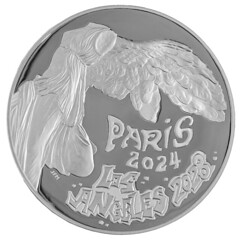 The United States Mint announced today that Los Angeles Mayor Karen Bass will present Paris Mayor Anne Hidalgo with the official LA28 Handover Medallion designed and struck by the Mint to honor the closing ceremonies of the 2024 Paris Summer Olympic Games on August 11, as part of a tradition that honors the past while looking to the future.
The United States Mint announced today that Los Angeles Mayor Karen Bass will present Paris Mayor Anne Hidalgo with the official LA28 Handover Medallion designed and struck by the Mint to honor the closing ceremonies of the 2024 Paris Summer Olympic Games on August 11, as part of a tradition that honors the past while looking to the future.
A historic tradition during the closing ceremonies, the mayors of the host cities of the closing and upcoming Olympic Games join the International Olympic Committee Officials on stage, and the flag of the games is lowered and passed from mayor to mayor as a symbolic highlight.
Each host city has historically provided an official gift, typically a coin or medallion, to serve as both an expression of goodwill between nations and a signal of a major milestone in the Games itself. The handover medallion marks the official hand-off of the Games and celebrates the two cities/countries hosting them.
We are proud to have a creative role in celebrating the unique status of the Olympic Games,
said United States Mint Director Ventris C. Gibson. The LA28 Handover Medallion salutes the remarkable achievement of the Paris 2024 Organizing Committee, while at the same time represents the excitement of the United States hosting the Olympics in Los Angeles in 2028.
Created by the United States Mint, the obverse (heads) of the 99.9% silver medallion is designed by Mint Chief Engraver Joseph Menna, and the reverse (tails) is designed by Mint Medallic Artist Phebe Hemphill. The designs recognize the art and culture inspired by this year's host city, Paris, and the future host city of the next Olympiad, Los Angeles.
The obverse design features a stylized depiction of The Winged Victory of Samothrace
alongside the inscriptions PARIS 2024
and LOS ANGELES 2028
done in Art Deco and Graffiti Arts style, respectively.
The reverse design depicts the Arc de Triomphe in the foreground with the Los Angeles Coliseum centered in the background, a visual representation of the games transitioning from Paris to Los Angeles. Centered above the Coliseum is the LA28 Olympic Handover emblem.
The Secretary of the Treasury authorized the Mint to produce both the official Handover Medallion as well as additional silver duplicate medals provided to the United States Olympic and Paralympic Properties (USOPP) for the purpose of presentation to dignitaries in conjunction with the closing ceremonies of the 2024 Paris Summer Olympic Games and Paralympic Games.
To read the complete article, see:
United States Mint Handover Medallion to be Presented at the Paris 2024 Summer Olympic Games Closing Ceremony
(https://www.usmint.gov/news/press-releases/united-states-mint-handover-medallion-to-be-presented-at-the-paris-2024-summer-olympic-games-closing-ceremony)
THE BOOK BAZARRE
NEW ENGLAND'S GODFATHER OF COUNTERFEITING
Pablo Hoffman of New York City passed along this Atlas Obscura article on counterfeiter Glazier Wheeler. Thanks! -Editor
The year was 1789 when an old man shoveled dirt onto two hefty barrels of silver, hidden away in a cave on the roaring banks of the Swift River in Massachusetts. He needed to bury his treasure, because he had procured it by means that were considered illegal and, at one point, mystical. This old man was Glazier Wheeler, once a blacksmith and engraver, but the town of Dana knew him as the alchemist.
Wheeler spent his life practicing the art of converting base metals
into silver through chemical reactions. By the late 1780s, his barrels were the culmination of a lifetime spent manipulating the silver content of coins. Wheeler's buried treasure engraved his name in the criminal history of New England as a godfather of counterfeiting.
Wheeler had a monomaniacal obsession with silver. He began his career as a respected metalworker in Newbury, New Hampshire, and developed a preoccupation with the belief that cheap metals, such as pewter and brass, could be transmuted
into silver—in other words, alchemy. Alchemy had been around since the medieval era, and in the 1600s, the Puritan elite of Boston had been proudly obsessed with the process of alchemy as a spiritual exercise. But by the 1700s, it was becoming more scientific—alchemists were becoming chemists.
 At the time, there was high demand for metallic coins and little law to enforce penalties for manipulating currency. Paper currency, a minor novelty in the 1760s, was distrusted in rural areas, as it fluctuated widely in value and was subject to expiration dates. Wheeler had become adept at illegally minting silver dollars (known as
At the time, there was high demand for metallic coins and little law to enforce penalties for manipulating currency. Paper currency, a minor novelty in the 1760s, was distrusted in rural areas, as it fluctuated widely in value and was subject to expiration dates. Wheeler had become adept at illegally minting silver dollars (known as half joes
) at the rate of three or four fakes to the cost of one standard dollar during his time in Haverhill, New Hampshire. He even offered his services in 1768 to sell $60 worth of stamps and tools
that could produce false silver dollars.
He was only discovered when he pressed his coins so thin as to retain only half the silver content of a legitimate coin. A New Hampshire court order was issued in 1783 ordering that Glazier Wheeler be arrested and have his ears cut off (cropt
). Wheeler eluded the local sheriff then headed south to continue debasing coins.
Thereafter, he became a regional legend in New England. He remained active in remote areas, such as New Salem in Massachusetts, where he could freely distribute both chemicals and metal dies
(hollow molds used to cut shapes for coins) to other counterfeiters. By 1784, Wheeler was associated with con artist Stephen Burroughs who would describe Glazier Wheeler in his Memoirs as Credulous to the extreme… He had spent all his days in pursuit of the knowledge of counterfeiting silver, so as to bear the test of essays.
These tests proved the legitimacy of currency by sensory or chemical reaction, but Wheeler was talented at defrauding them.
Wheeler and Burroughs were finally arrested for attempting to pass off counterfeit coins at an apothecary in Springfield. They faced a dramatic trial in 1785, then the two were imprisoned in the Castle Island prison in Boston Harbor. After release, likely around 1788, Wheeler drifted to the area of Dana where he spent the rest of his life fiddling with pewter dollars
and forged bills in his cave, living out his legacy.
Alchemists had long attempted to turn different elements into gold, silver, or money in general. It seems fitting that, as science improved and alchemy began transitioning into chemistry, the practice turned to forging coins. Likewise, people on the other side of the law were using the evolving chemical science to thwart counterfeiters.
The Memoirs of Stephen Burroughs are on the Newman Numismatic Portal, along with multiple references to Glazier Wheeler. -Editor
To read the complete article, see:
How the Alchemist of New England Became a Legendary Counterfeiter
(https://www.atlasobscura.com/articles/alchemist-of-new-england-history-of-counterfeiting)
POLICEMAN COUNTERFEITED 2 EURO COINS
Counterfeiting never goes out of style. A policeman was arrested in Kosovo, suspected of making two million counterfeit 2-euro coins. -Editor
 A Macedonian policeman, arrested in Kosovo, is suspected of having produced around 2 million counterfeit coins of the 2-euro stamp, the European Union Agency for Cooperation in Criminal Justice (Eurojust) has said. Thousands of coins that were forged by his group ended up in Kosovo.
A Macedonian policeman, arrested in Kosovo, is suspected of having produced around 2 million counterfeit coins of the 2-euro stamp, the European Union Agency for Cooperation in Criminal Justice (Eurojust) has said. Thousands of coins that were forged by his group ended up in Kosovo.
The 34-year-old policeman, instead of chasing counterfeiters and criminals, turned into a money counterfeiter. The person arrested, on August 4, in Pristina, is from Resnja, North Macedonia. He worked in the Macedonian Police department for fighting serious crimes and organized crime.
Radio Free Europe's sources from the investigation said that the arrested person was part of a network of counterfeiters, but not the "brains" of the operation. His arrest was made after months of planning by the Macedonian and Kosovar authorities, with the support of Eurojust and the European Police Agency (EUROPOL).
The counterfeit money was produced with two machines in a basement in Skopje.
The police also seized two bags of coins. Counterfeiters used six different versions found on the side of the 2-euro coin.
In the joint announcement of the Macedonian and Kosovar prosecutors, it was said that hundreds of thousands of fake coins "produced" in North Macedonia had "flooded" the Kosovo market since last year. But, in the latest announcement of the Central Bank of Kosovo, it is understood that the problem with counterfeit money is even bigger.
This is due to the fact that in a year and a half, the CBK has withdrawn from circulation 2.5 million coins of 2 euros, which reach the total value of 5 million euros.
To read the complete article, see:
Over 2 million coins, as the Macedonian police filled the Kosovo market with fake money!
(https://pamfleti.net/english/prishtine/mbi-2-milione-monedha-si-polici-maqedonas-mbushi-tregun-e-kosoves-me-p-i239585)
LOOSE CHANGE: AUGUST 11, 2024
Here are some additional items in the media this week that may be of interest. -Editor
CBS News reported this week that Colombia's government released new video of artifacts have been found on the wreck of the legendary Spanish galleon San Jose. -Editor
New artifacts have been found on the legendary Spanish galleon San Jose, Colombia's government announced Thursday, after the first robotic exploration of the three-century-old shipwreck.
Dubbed the "holy grail" of shipwrecks, the San Jose was owned by the Spanish crown when it was sunk by the British navy near Cartagena in 1708.
It said a robot surveyed the wreck, whose exact location has been kept secret since its discovery in 2015, between May 23 and June 1, covering an area "equivalent to more than 40 professional soccer fields."
The images reported had shown, among other things, cast iron cannons, porcelain pieces, pottery and objects apparently made of gold.
The ship had been heading back from the New World to the court of King Philip V of Spain, laden with treasures such as chests of emeralds and some 200 tons of gold coins.
To read the complete article, see:
New artifacts found in "holy grail" of shipwrecks that sank 3 centuries ago with billions of dollars in treasure
(https://www.cbsnews.com/news/san-jose-shipwreck-colombia-new-artifacts-found-billions-treasure/)
I was excited this morning to read a headline that "$5,800 of airplane hijacker D. B. Cooper's ransom money is found," only to learn that the August 6, 2024 article is an essay on HistoryLink.org, "the continually evolving online encyclopedia of Washington state history." But it's an excellent account of the famous 1971 hijacking and what is known today. Here's an excerpt - see the complete article online. -Editor
On February 10, 1980, 8-year-old Brian Ingram (b. 1969) is smoothing sand for a campfire on the Washington side of the Columbia River when he comes across three deteriorating packs of $20 bills still bound by rubber bands. The bills were last seen on November 24, 1971, the night they were given to the hijacker known as D. B. Cooper, who demanded $200,000 and four parachutes on a flight from Portland to Sea-Tac International Airport. After getting the cash in Seattle, Cooper demanded the plane fly to Mexico, and shortly after 8 p.m. he jumped from the plane's back stairs somewhere over Southwestern Washington. Cooper's case is the world's only unsolved airplane hijacking, and the FBI says Ingram's find is their first clue since Cooper jumped. More than a half century later, it's arguably still their best.
The three crumbling bill packets were turned over to the FBI, and the agency identified the bills by the serial numbers that had been supplied the night of the hijacking by Seattle First National Bank (in a bag weighing 19 pounds, with the contents measuring 11 inches by 12 inches by 6.5 inches). The serial numbers were recorded on microfilm before Cooper received the money.
When the bills were found, some were so badly deteriorated they were described as unreadable. Others were described as the size of a business card, and some were black. The family estimated only about 30 of the bills were still in good condition. Still, the assistant special agent in charge of the Portland FBI office, Bill Baker, said it was the first clue the FBI had since the night of the hijacking – and banner headlines were splashed above the fold of Seattle newspapers. The Ingrams went to the FBI the day after their discovery and made international news after their February 12 news conference at the FBI's Portland office. The FBI confirmed the money was from ransom packets given to Cooper: two packets of 100 $20 bills and a third packet of 90, arranged in the same order as delivered in 1971. An FBI case agent said part of why they gave small bills was an attempt to weigh Cooper down.
To read the complete article, see:
$5,800 of airplane hijacker D. B. Cooper's ransom money is found near the Columbia River on February 10, 1980.
(https://www.historylink.org/File/23059)
For bibliophiles, here's a Wall Street Journal review of the new book on the history of the American bookstore. -Editor
 For all the talk of a renaissance in this arena, the author's data show that in 1993 America had three times as many bookstores per capita as it did in 2021. Barnes & Noble, once portrayed as a ravenous monster, is now a teetering giant inspiring book-trade pity, not to mention terror lest it collapse. Taking its place as the business's Great Satan is of course Amazon, whose massive sales and book-industry power seem to inspire dependence and loathing in equal measure.
For all the talk of a renaissance in this arena, the author's data show that in 1993 America had three times as many bookstores per capita as it did in 2021. Barnes & Noble, once portrayed as a ravenous monster, is now a teetering giant inspiring book-trade pity, not to mention terror lest it collapse. Taking its place as the business's Great Satan is of course Amazon, whose massive sales and book-industry power seem to inspire dependence and loathing in equal measure.
Mr. Friss, a historian at James Madison University, has made the shrewd decision to tell the story of American bookselling through the lives of its most interesting and colorful practitioners, from Ben Franklin in colonial Philadelphia through Ann Patchett, the novelist who for many years has had a bookstore in Nashville, Tenn. More typical, perhaps, is Frances Steloff, whose bohemian devotion to books and the arts sustained New York's Gotham Book Mart for so long.
Of course, there is nothing new under the sun: Bookstores have always found it a struggle to get by on books alone and even long ago sold tchotchkes and delicacies to help make ends meet. Along with his stock of books, Ben Franklin proffered not just very good Chocolate
but sometimes coffee, wine and even protractors.
To read the complete article, see:
‘Shopkeeping' and ‘The Bookshop': A Business for Bibliophiles
(https://www.wsj.com/arts-culture/books/shopkeeping-and-the-bookshop-a-business-for-bibliophiles-fbe81fd4)
To read the earlier E-Sylum article, see:
LOOSE CHANGE: AUGUST 4, 2024 : New Book: The Bookshop
(https://www.coinbooks.org/v27/esylum_v27n31a26.html)


